Topic: Travelling


Hotel reviews
Engage students in conversations about different types of places to stay and their experiences! With this lesson, students practise vocabulary related to accommodation, watch videos and write hotel reviews.

My home is your home
Check out this lesson to have an engaging conversation about home exchange and house sitting and help your students learn useful vocabulary to describe experiences.

Please have your boarding pass ready
Students learn airport and plane phrases, listen to announcements and watch a video with a song. They also talk, role-play and exchange ideas.

Business trips: fun or boring?
This lesson allows students to talk about business trips, learn some useful vocabulary, and have a lot of discussion and role-play.
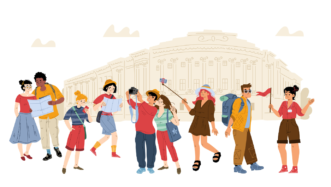
Downsides of tourism
This speaking lesson focuses on talking about tourism and its problems. Students talk about travelling in general and tourism as an industry, watch a video and discuss solutions to the problems.

The intangible benefits of travelling
In this lesson students talk about the article they read at home, learn some vocabulary and talk about different ways of travelling and their benefits.

Food culture, coffee culture
In this ESL lesson about coffee and food culture students have a lot of discussion, watch a video, study nouns that can be both countable and uncountable, and have a lot of fun practice.

Living abroad
In this ESL lesson about living abroad, students watch a testimonial video about learning Portuguese in Brazil, learn some useful collocations and talk about living in different countries.
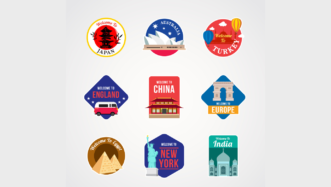
Nation branding and St. Patrick’s Day
In this lesson about St. Patrick’s Day, students watch a video about the origins of the holiday. They also discuss nation branding and practise vocabulary for talking about abstract ideas.

Are you into flying?
This worksheet focuses on speaking about air travel. Students answer different questions, watch and discuss a video. They also read and discuss short stories and create their own.

Would you like a lava snack?
With this tourism lesson plan, students discuss gastro-tourism, watch a video and learn vocabulary related to food.

Life is better outdoors!
In this lesson, students watch a video about Taiwan and practise vocabulary related to nature and free time activities.
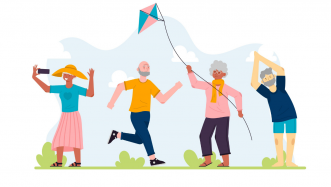
You’re never too old for great things
In this lesson, students learn the differences between Present Perfect and Past Simple. They also practise using the two tenses, watch a video and talk about active lives of elderly people.

Visiting the art capital
This lesson plan is all about New York. Students will discuss some quotes about New York, watch a video about art in this city and learn adjectives to describe art.

Travel is the only thing you buy that makes you richer
With this travel worksheet, pre-intermediate students can talk about how travelling changes them and learn some useful vocabulary. They also read a short text, watch a video about dream travel destinations and write an email.

Let’s go hiking!
In this lesson students learn hiking vocabulary, read some tips, watch a video about hiking and decide what they would and wouldn’t take on a hike.

Flying business class (conjunctions and prepositions)
In this video-based lesson about flying economy, business and first class with Emirates, students will be practising conjunctions and prepositions. They will also discover some luxurious cabin features while discussing business trips.
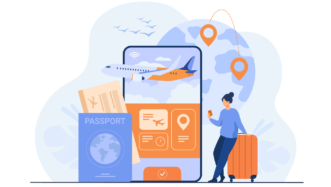
What are your travelling tips? (modal verbs)
Thanks to this worksheet, students will discover and practise modal verbs (can, have to, should), watch a video and discuss different travelling tips and rules.
Subscribe to get premium content
Subscribe to get access to professional, ready-to-use lesson plans in both digital and printable formats . Discover a variety of lesson types: Standard Lessons, Speaking Classes, Critical Reading Club worksheets and Flipped Classroom lesson plans.
We are using cookies to give you the best experience on our website, personalize content and analyze website traffic. For these reasons, we may share your site usage data with our social media, and analytics partners. You can find out more about which cookies we are using or switch them off in settings.
Privacy settings
With the slider, you can enable or disable different types of cookies:, this website will:, this website won't:.
- Essential: Remember your cookie permission setting
- Essential: Allow session cookies
- Essential: Gather information you input into a contact forms, newsletter and other forms across all pages
- Essential: Keep track of what subscription you select to buy
- Essential: Authenticate that you are logged into your user account
- Remember your login details
- Functionality: Remember social media settings
- Functionality: Remember selected region and country
- Analytics: Keep track of your visited pages and interaction taken
- Analytics: Keep track about your location and region based on your IP number
- Analytics: Keep track of the time spent on each page
- Analytics: Increase the data quality of the statistics functions
- Advertising: Tailor information and advertising to your interests based on e.g. the content you have visited before. (Currently we do not use targeting or targeting cookies.
- Advertising: Gather personally identifiable information such as name and location
- Advertising: Use information for tailored advertising with third parties
- Advertising: Allow you to connect to social sites
- Advertising: Identify device you are using
- Essential: Keep track of what you input in a shopping cart
- Essential: Remember language version you selected
- Advertising: Allow you to connect to social sitesl Advertising: Identify device you are using
Username or Email Address
Remember Me

“The world is a book and those who do not travel read only one page.” Augustine of Hippo (354 – 430), theologian and philosopher
- April 8, 2021
- General English
Home » Travel
Latest lesson plans

LESSON OVERVIEW
This free ESL lesson plan on travel has been designed for adults and young adults at an intermediate (B1/B2) to advanced (C1/C2) level and should last around 45 to 60 minutes for one student.
Whether it’s exploring new places, or relaxing in familiar ones, everyone loves travelling. In fact, many people learning English are doing so for that exact reason. In the past, travelling to exotic locations was only for the super-rich. Now, with the expansion of budget airlines and cheap packages, the world is a lot more accessible to a lot more people. In this ESL lesson plan on travel, students will have the opportunity to discuss and express their opinions on issues such as how much they like travelling, the best places they have visited and different forms of travel.
This lesson plan could also be used with your students to debate these issues for World Tourism Day , which takes place in September. For more lesson plans on international days and important holidays, see the calendar of world days to plan your classes for these special occasions.
For advice on how to use this English lesson plan and other lesson plans on this site, see the guide for ESL teachers .
PRE-CLASS ACTIVITIES
Reading activity Before the English class, send the following article to the students and ask them to read it while making a list of any new vocabulary or phrases they find (explain any the students don’t understand in the class):
World of Wanderlust | The Top 25 Best Destinations in the World
The article provides descriptions of some of the most visited tourist destinations in the world. At the start of the class, hold a brief discussion about what the students thought about the article. Have the students visited any of these places? If so, what did they think about them? Which of the places on the list would they most like to visit and why? Can they think of any of the destinations that should not be on the list? Which other destinations should be on a list of the best destinations in the world?
Video activity To save time in class for the conversation activities, the English teacher can ask the students to watch the video below and answer the listening questions in Section 3 of the lesson plan at home. There are intermediate listening questions and advanced listening questions so teachers can decide which would be more appropriate for their students. Check the answers in the class.
The video for this class is called “The Point of Travel” by The School of Life which views travel as a kind of therapy that can help us with our emotional state of mind.
IN-CLASS ACTIVITIES
The focus in the class is on conversation in order to help improve students’ fluency and confidence when speaking in English as well as boosting their vocabulary.
This lesson opens with a short discussion about the article the students read before the class. Next, the students can give their opinion on the quote at the beginning of the lesson plan – what they think the quote means and if they agree with it. This is followed by an initial discussion on the topic including the benefits of travel, the student’s favourite holiday/vacation and the best places to spend a holiday/vacation in their country.
After this, students will learn some vocabulary connected with travel such as backpacking , off the beaten path/track and bucket list . This vocabulary has been chosen to boost the students’ knowledge of less common vocabulary that could be useful for preparing for English exams like IELTS or TOEFL. The vocabulary is accompanied by a cloze activity and a speaking activity to test the students’ comprehension of these words. This may also be a good time to explain the difference between travel, trip and journey , as these words are often confused by students
If the students didn’t watch the video before the class, they can watch it after the vocabulary section and answer the listening questions. Before checking the answers, ask the students to give a brief summary of the video and what they thought about the content.
Finally, there is a more in-depth conversation about travel. In this speaking activity, students will talk about issues such as the different types of holiday/vacation people like to go on, how much they like to plan for a trip and the attraction of solo travel.
After the class, students will write about their opinion of travel. This could be a short paragraph or a longer piece of writing depending on what level the student is at. The writing activity is designed to allow students to practise and improve their grammar with the feedback from their teacher. For students who intend to take an international English exam such as IELTS or TOEFL, there is an alternative essay question to practise their essay-writing skills.
DOWNLOAD LESSON PLANS

Did you find this lesson plan useful?
Your English Pal is a free resource to help fellow ESL teachers save time when preparing their classes. If these lesson plans have helped you, and you’d like to help keep the site free, please consider making a small contribution to help cover the site’s costs. Any help you can give is much appreciated!
2 thoughts on “Travel”
Hi I donante 5 dollars I can not download the lesson plan travel c1 c2
Hi Elsa. Thank you very much for your donation! You can download the lesson plan by clicking the PDF images at the bottom of the page (one for teachers and one for students). It should open in the new page and then you can click the download arrow at the top right to save them to your computer. Let me know if that works
Leave a Comment Cancel Reply
Your email address will not be published. Required fields are marked *
Save my name, email, and website in this browser for the next time I comment.
Copyright © 2023 Your English Pal
Privacy Overview

Travel ESL Lesson Plans
- A2 Pre-Intermediate
- B1 Intermediate
- B2 Upper Intermediate
- C1 Advanced
- C2 Proficiency
Lesson times:
- 30 min
- 45 min
- 60 min
- 75 min
- 90 min
Lesson types:
- Free
- Premium
ESL Travel Lesson Plans
If you are looking for an ESL lesson plan on transportation and travel, look no more. You’re in the right place.

Why we travel
This Upper Intermediate lesson plan focuses on expanding travel vocabulary and…

Check out Vienna!
This A2 ESL lesson plan aims to enhance students’ understanding of…

How safe is flying?
This C1 lesson plan focuses on expanding aviation vocabulary …

The geography of small talk
In this Intermediate lesson plan, students will engage in discussions about the nuances…

Chillin’ in Svalbard
In this Upper-Intermediate lesson plan, students will learn about must vs. have to. They will…

If you’re going to San Francisco…
In this Advanced ESL lesson, the students will learn about the culture of…

Paragliding to work
In this Intermediate lesson plan, students will talk about the most popular ways…

Exactly where are we now?
In this C2 lesson plan, students will practice vocabulary about travel and international borders. They…

Doing Mardi Gras like a real New Orleanian
In this Advanced ESL lesson, students will talk about a parade and the…

Subscribe to premium content
Here you can find ESL lesson plans on transportation and travel for all difficulty levels, both free and premium.
Our offer – Travel English
We are offering ESL lesson plans for you to use during lessons with your students. Lessons are currently available at A2 and B1 levels , B2, C1 and C2. The duration of each lesson is between 30 and 90 minutes, depending on the plan you choose . This means that you can choose a lesson that suits your students’ level as well as your desired lesson length. The plans are designed to make your job as easy as possible and your teaching as effective as possible. Tired of “forcing” your students to speak? Try our lessons, they guarantee all kinds of discussions between students on topics they actually enjoy, since everyone travels sometimes.
Learn travel vocabulary
Our lesson plans focus on travelling, which gives your students a chance to learn language skills that they will most likely use in their lives. This can also make the lessons interesting – the students can share their experiences with travelling, stories about their travels, share their views on different countries, different cultures and various tourist attractions that they have seen. Lessons include current events, such as traveling during the pandemic, all kinds of situations that may occur at the airport, types of luggage you may bring and much more.
Lessons consist of content that should provoke discussion and prevent students from answering with a simple “yes” or “no”. This will help increase student confidence and also make the teacher’s job easier.
What else to expect
All our ESL Travel lesson plans comprise reading comprehensions, entertaining and inspirational videos, grammar rules and exercises, as well as various forms of discussion related to the topic.
Each week you can expect a new lesson to become available.
Currently we have lessons on travel related topics, such as:
- travelling abroad,
- travelling by planes,
- types of luggage,
- different types of travels and vacations,
- tourist attraction and different tourist destinations,
- life-on-the-road experience.
Our lessons in a few words
You can browse through our lessons to find the ones that suit your needs best. There is an overview for each lesson, so you know exactly what kind of vocabulary you will be teaching and what methods you will use.
Lessons include warm up discussions, videos for your students to watch, reading sections and grammar exercises. All of these elements add up to a complete lesson plan that will ensure your students go home with valuable new skills.
ESL Activities
ESL Games, Activities, Lesson Plans, Jobs & More
in Icebreakers + Warm-Ups · Listening · Reading · Speaking · Writing
Travel & Holidays ESL Games, Worksheets | ESL Travel Activities
If you need some fresh, new ideas for the ESL travel and holiday unit that you can find in most textbooks, then you’re in the right place. We’ll share our top ideas for games and activities, along with travel vocabulary, worksheets and lesson plans. Let’s get to the best ESL holiday activities.

ESL holiday and travel-themed activities
Let’s get into everything you need to know for an ESL holiday lesson. Keep on reading!
ESL Travel and Holiday Activities
Here are the top ESL travel activities that you may want to try out with your students.
#1: Plan a Trip
Have your students plan a dream vacation in English! Instead of researching in their first language, use Google in English. In order to practice writing, keep notes only in English. Here’s an example of how you might plan your trip using English. You can have your students add as little, or as much detail as you’d like. However, the point of the activity is to practice writing in point form which is useful when writing outlines for tests or essays.
Day 1: Monday, January 1
Fly Seoul (3pm) —-> Vancouver (7am) Check in Hotel ABC, 123 Avenue Rest, relax
Day 2: Tuesday, January 2
Stay Hotel ABC Tour Stanley Park Eat Pub XYZ dinner
Day 3: Wednesday, January 3
Check out Hotel ABC Rent car Budget 123 Drive Whistler Rent skis shop ABC Go Skiing Lunch ski lodge Check in Hotel ABC Whistler Bed early
Procedure for one of my favourite ESL travel activities:
- Give students time to do some Internet research about a place they want to go. It’s helpful to specify the number of days. I generally make a rule that they must do this research in English. Suggest some helpful websites where they might like to start (Trip Advisor, Air BnB, etc.).
- Students can make a day-by-day itinerary of what they’re trip is going to look like.
- They can share about their trip with the class or turn it in for a graded assignment.

- Amazon Kindle Edition
- Bolen, Jackie (Author)
- English (Publication Language)
- 78 Pages - 03/22/2021 (Publication Date)
#2: A-Z Alphabet Game
If you know that your students already know a fair bit about holiday and travel, you may want to try this quick warm-up game. Or, you could consider using it as a review game at the end of a class.
The way it works is that students, in pairs or small groups write down the alphabet on a piece of paper. Then, they have to think of one travel related word for each letter. It doesn’t have to be done in order. For example:
P: Passport
The winner is the team with the most completed letters at the end of the allotted time. Do you want to find out more? Check this out: A-Z Alphabet Game ESL .
#3: Travel Word Association
This is nice ESL activity to do if you know that your students have studied about travel and holidays before. They can shout out vocabulary words related to this and you can make a mind map or sorts on the board. Group similar things together. For example, articles of clothing.
Find out more about this quick ESL warmer right here: ESL Vocabulary Word Association.

- 146 Pages - 06/18/2020 (Publication Date)
#4: Postcards ESOL Travel Activity
If you can get your hands on some cheap postcards or have some laying around your house or teacher’s office, try out this fun writing activity. It may just be the novelty factor, but students seem to love it. This activity is ideal for working on common greetings, the past tense (more ideas here: ESL past tense games ), and using descriptive words, as well as using synonyms to avoid repetition.
Distribute the postcards to the students. You can do one per student, or put the students into pairs. They have to look at the picture on the front of the postcard and imagine that they went on this vacation. Then, they can write about their trip to a friend or family member.
Next, the students trade postcards with another student or group. After reading them, they can write a response back of at least a few sentences. Finally, you may want to display them around the class as they’re colourful and fun and other students may enjoy reading them! Have some fun with this ESOL travel activity.
- Give each student or pair a postcard. They look at the picture and imagine what they did on that vacation, and then pretend that they’re writing to a friend or family member.
- Exchange postcards and another student or group have to write a response to what they read.
- Display the postcards around your classroom (optional).
#5: Travel or Holiday Videos
I’m ALL about using videos with my ESL/EFL students. They’re fun, engaging and a nice way to grab student’s attention and introduce a topic. Of course, you can base an entire class around one too if you design the activities well.
If you want to find out more about using them in your classes and some activities and games to do with them, you’ll want to check this out: Using Videos for Teaching English .
#6: Dictogloss ESOL Travel Activity
This is a challenging activity that works on listening and writing skills. Find a short story related to holiday or travel. It could even be a description of your own vacation that you took recently.
Then, you read out the story to your students in a way that is a bit challenging for them to catch every word. Students have to take notes and then try to reconstruct what they heard based on their notes in small groups. You can read it again so that students have a chance to make some additions or corrections. Finally, students compare their version with the original.
Do you want to try it out with your students? You can learn more about one of the best ESL travel activities here: ESL Dictogloss Activity .
#7: Holidays ESL Lesson Plan
It’s easy to plan an ESL lesson about any topic, including holidays. Check out this video for the steps to follow:
#8: Yes/No Questions and Answers
If you think about it, holidays and travel lend themselves to a ton of yes/no questions. For example:
- Did you fly or drive?
- Did you eat some delicious things?
- Was the food good?
- Did you have nice weather?
If you want to see some activities or games to work on these kinds of questions, you’ll want to check this out: Yes/No Activities and Games.

- 279 Pages - 07/12/2020 (Publication Date)
#9: ESL Food Activities and Games
I’m not sure if it’s the same for you, but when I travel, it’s ALL about the food. I want to try all the delicious things where I’m staying! The good news is that I have a ton of fun, interactive games and activities for food. You can easily adapt most of them to focus on holidays.
You can find out more details here: ESL Food Activities.
#10: ESL Surveys
I love to use surveys in my classes because they lend themselves to just about any topic. In the case of travel, they’re ideal for working on the present perfect and simple past together.
For example:
Have you ever travelled to another country?
Where did you go?
If you want to know more about how to design and use surveys in your classes for an ESL travel lesson, then you’ll want to check this out: Surveys for ESL Students.
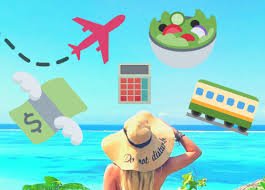
ESL Travel Games and Activities
I also love to use ESL surveys to get students to express an opinion in English.
#11: Present Perfect Activities Related to Travel
The present perfect is often used to talk about vacations, travel and holidays. For example:
- Have you ever been to another country?
- Have you travelled to ______ before?
In order to incorporate this grammatical construction into some of your lesson, you’ll want to check this out: Present Perfect ESL Activities.
#12: Brochure Scanning
This is an excellent travel activity! You’ll have to get your hands on some travel brochures first. The way it works is that students get tons of practice with a reading sub-skill (scanning) because they have to look quickly through the brochures to find specific bits of information. For example, cost or number or days.
Do you want to try out this reading activity? You can find out all the details here: Brochure Scanning Reading Activity for ESL .
#13: Odd One Out ESL Warmer
This is a quick English warm-up activity that you can try out with your students. The way it works is that you write words, in groups of 4 on the board. 3 are similar and 1 is the odd one out. Students have to choose this one and say why it doesn’t fit. For example:
Bathing suit, sunglasses, boots, flip-flops
Answers: Boots because it’s not for a beach vacation. I accept many different answers as long as students support it well.
You can learn more about this ESL warm-up here: Odd One Out for ESL .

- 87 Pages - 10/24/2019 (Publication Date)
#14: Would you Rather?
I’m sure you’ve done this before with friends. You have to choose between two negative things, or two positive things. For example, how you want to die, or what you want to eat. In this case, students could choose between two types of vacation. For example:
Would you rather have a beach or forest vacation?
Would you rather stay in a big hotel, or an AirBNB?
Learn more about this nice activity for an ESL travel lesson here: ESL Would You Rather?

- 81 Pages - 06/22/2021 (Publication Date)
#15: Task Based Activity: Dream Vacation
I love to incorporate this style of teaching into my holiday lessons. It allows students more freedom to choose what they want to learn about and also builds opportunities for some serious teamwork.
In this case, I’ll have students work in groups of 2-3 to plan a dream vacation. They can do some research to find out all the details including how to get there, food, budget, where to stay, etc. Then, they either have to write a report and hand it in to me and/or do a short presentation to the class.
Need some more ideas for this style of a lesson? Check this out: Task-Based Learning .
#16: Travel Themed Charades
I love to play charades with my students. The way it works is that you can think of some travel-related phrases. For example:
- Flying on a plane
- Sleeping on a bus
- Eating noodles
- Buying souvenirs
Then, students have to act this out and their teammates have to guess what the phrase is. More details here: ESL Charades.
#17: Travel Journal
Encourage students to keep a travel journal for a fictional trip. They can describe their experiences, sights, and sounds, using new vocabulary.
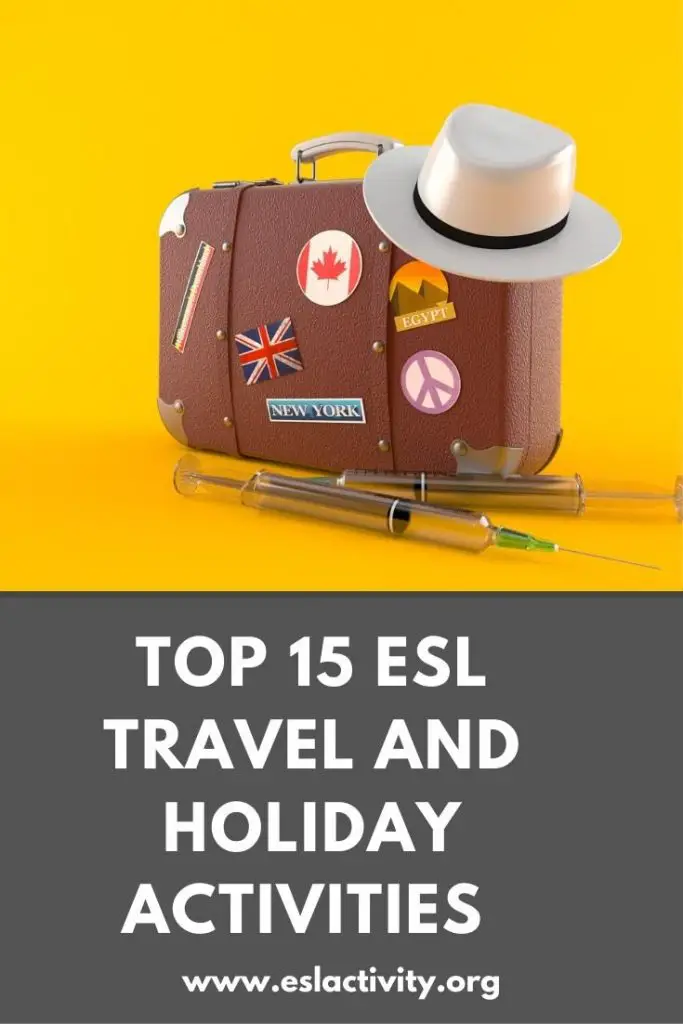
Travel and Holidays ESL
#18: Eliciting in an ESL Travel Lesson
Unless your students are absolute beginners, then it’s likely that they already know a good amount of travel and holiday vocabulary. That’s often why I like to start off my ESL traveling lesson by using some eliciting techniques. There are two main reasons for this.
The first reason is that it’s possible to find out what the students already know about this topic to avoid wasting class time covering these things. The second is that it helps students activate their prior knowledge about travel/holidays to make the new things they learn more memorable. Learn how to do this tactic for an ESL holiday lesson here:
ESL Eliciting Advice .
#19: Travel Listening Lesson
A nice way to talk about any topic is through a listening lesson. In this case, find a conversation between two people talking about an upcoming vacation plan. Or, someone talking about a favourite vacation from the past (it could even be you). Then, design an entire listening lesson around that. Find out how here:
#20: Idiom ESL Traveling Activity
There are lots of idioms related to holidays, travel and transportation. Here are just a few of them:
- All hands on deck
- To send flying
- Bump in the road
- Off the rails
- Train wreck
- Asleep at the wheel
- Fall off the wagon
- Hit the road
One of the best ways to make these idioms super memorable is to do this fun activity. Afterwards, your students will never forget! Learn more about this ESL activity:
Idiom Activity for Language Learners .
#21: Concentration ESL Traveling Vocabulary
One of the best ways to review new words during an ESL holiday or travel lesson is to play this memory game. Depending on the level of the students, make some matching pairs of cards with the following:
- Word/picture
- Word/definition
- Word/clue about the word
Then in small groups, students play the game to find the matches. Find out all the details about how to set it up and play:
ESL Concentration Game .
#22: Speaking Fluency Activity
To use this activity with a unit on holidays or travel, have students talk about a past, or upcoming vacation.
#23: Me Too!
Students have to make a true statement about themselves related to holidays and travelling. For example:
- I’ve been to Japan.
- I hate the beach.
- My family goes on a big vacation every summer.
If other students can agree, they stand up and say, “Me too!”
#24: Labour Day Guessing Game
#25: Holiday Interviews
Pair students and have them interview each other about their favorite holidays. They can then present their partner’s holiday to the class.
#26: Travel Bingo
Create bingo cards with images or words related to travel and holidays. Students mark off the squares as they learn new vocabulary.
#27: Travel-Themed Role-Plays
Set up role-plays where students act as travelers, airport staff, or hotel receptionists. This helps them practice common travel dialogues.
#28: Travel Vocabulary Pictionary
Play Pictionary using travel-related words. Students take turns drawing and guessing the vocabulary words.
#29: Travel Storytelling
Ask students to create and share short stories about a memorable travel experience they’ve had or wish to have in the future.
#30: Travel Debate
Have students debate the pros and cons of traveling. This encourages critical thinking and speaking skills.
Travel and Holiday Vocabulary
Here are some of the most common vocabulary words that you may want to teach your students related to traveling for an ESL holiday lesson.
- bathing suit
- boarding pass
- vaccination
- The months of the year in English
Do you have any ESL travelling vocabulary that you’d like us to add to the list? Leave a comment and let us know!
Travel Worksheets and Lesson Plans for ESL
If you’re looking for some worksheets or lesson plans related to holidays and travel, then you’ll want to check out some of our top resource recommendations:
ESOL Courses
ISL Collective
Lingua House
ESL Travel Vocabulary Worksheets
If you want students to get some practice with ESL travel vocab, here are a few recommendations:
English Club
Did you Like these Travel Games for ESL?
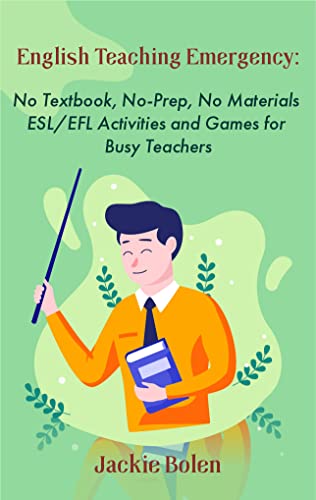
- 68 Pages - 11/12/2019 (Publication Date)
Yes? Thought so. Then you’re going to love this book: The Emergency English Teacher: No-Textbook, No-Prep, No-Materials ESL Activities.
If you’re always in need of last-minute activities and games for your classes, then this book is exactly what you might need. It’s English teaching made easy in a serious way.
You can get the book in digital or print formats. Take the e-version with you to your favourite coffee shop for lesson planning on the go. Or, keep a copy on the bookshelf in your office to use as a handy reference guide. But the best idea is to have it with you at all times for those English teaching emergencies.
Do you want to find out more? Head on over to Amazon to pick up your copy today:

FAQs about ESL Travel Lessons
There are a number of common questions that people have about teaching this unit. Here are the answers to some of the most popular ones.

What is the purpose of teaching the travel and holiday unit to English learners?
The purpose is to help English learners develop vocabulary, grammar, and conversational skills related to travel and holidays.
What topics can be covered within the travel and holiday unit?
Topics can include modes of transportation, booking accommodations, tourist attractions, holiday activities, travel phrases, and cultural aspects of different destinations.
How can I introduce vocabulary related to travel and holidays?
You can introduce vocabulary through visual aids, realia (actual objects), flashcards, and interactive activities such as matching games or vocabulary quizzes.
What grammar structures can be taught in the travel and holiday unit?
Grammar structures such as present simple for schedules and timetables, past simple for recounting travel experiences, future tenses for making travel plans, and modal verbs for expressing preferences or asking for permission can be taught.
What speaking activities can be used to practice travel and holiday-related topics?
Role-plays, group discussions about dream destinations, travel itineraries, or describing holiday experiences are effective speaking activities. Additionally, pair work activities like “Find Someone Who” or “Guess the Destination” can engage learners in conversation.
ESL Travel Activities and Games: Join the Conversation
What are your thoughts about these Holiday ESL activities? Do you have another one that you’d like to recommend to us? Leave a comment below and let us know what you think. We’d love to hear from you.
Also be sure to give this article a share on Facebook, Pinterest, or Twitter. It’ll help other busy English teachers, like yourself find this useful resource for ESOL travel lessons.
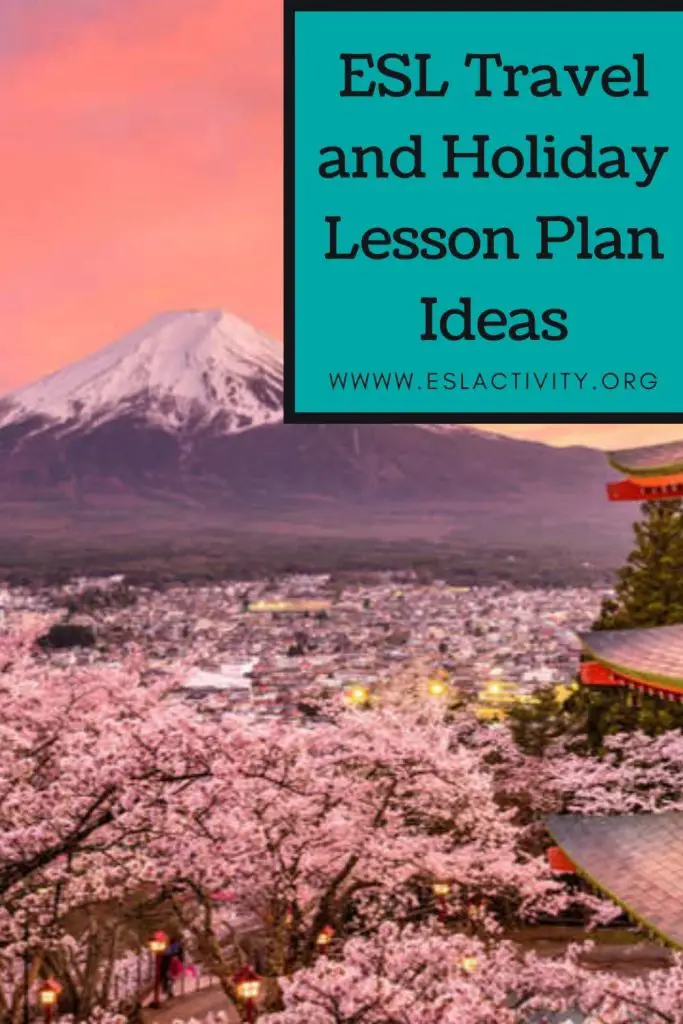
ESL Travel Lesson
Last update on 2022-07-17 / Affiliate links / Images from Amazon Product Advertising API
About Jackie
Jackie Bolen has been teaching English for more than 15 years to students in South Korea and Canada. She's taught all ages, levels and kinds of TEFL classes. She holds an MA degree, along with the Celta and Delta English teaching certifications.
Jackie is the author of more than 60 books for English teachers and English learners, including Business English Vocabulary Builder and 39 No-Prep/Low-Prep ESL Speaking Activities for Teenagers and Adults . She loves to share her ESL games, activities, teaching tips, and more with other teachers throughout the world.
You can find her on social media at: YouTube Facebook Pinterest TikTok LinkedIn Instagram
Top Selling ESL Activity Book

As an Amazon Associate, I earn from qualifying purchases.
More ESL Activities and Games

Passive Games and Activities ESL | Resources for Passive Voice
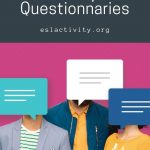
ESL Surveys for Students | TEFL Questionnaires Activity

What is the Relationship Between Language and Culture?

Second Conditional Activities, Games, Worksheets & Questions
About, contact, privacy policy.
Best-selling author and English teacher Jackie Bolen has been talking ESL activities and games since 2015. The goal is to bring you the best ideas, lesson plans, and activity recommendations for your TEFL classes.
Get in touch: About + Contact
Privacy Policy and Terms of Use
Email: [email protected]
Address: 2436 Kelly Ave, Port Coquitlam, Canada
ESL Lesson Plan: Travel Plans
Robert Deutschman / Getty Images
- Resources for Teachers
- Pronunciation & Conversation
- Writing Skills
- Reading Comprehension
- Business English
- TESOL Diploma, Trinity College London
- M.A., Music Performance, Cologne University of Music
- B.A., Vocal Performance, Eastman School of Music
This English lesson plan helps reinforce vocabulary related to traveling by asking students to plan trips and excursions based on the profile of different groups of travelers. It is helpful to use local newspapers, especially newspapers that provide local events, to give students ideas of real places to visit. Most large cities have specialty newspapers that focus on local events and attractions available for free throughout the city.
Instructions for Teachers
The lesson begins with students deciding which types of groups are going to take a trip. Based on which group of travelers are going, students then use resources to plan out a short stay in a specific city or area of the country. Of course, you can choose to have students focus on distant locations. If you are teaching English in another country, it's probably best to vary this and focus on traveling abroad to allow the use of English place names.
Lesson Aims: Completing a small group task using the internet and other resources available in English, describing a travel destination and itinerary in detail
Activity: Planning a short trip to a specific location based on different traveler types
Level: Intermediate
Lesson Plan
As a class, discuss what types of locations, travel plans, etc. might be suitable for these different types of travelers:
- A married couple on a honeymoon
- Two friends who are attending college
- Two business people
As a class, discuss which resources students can use to make travel plans. There are many travel websites online that offer all the necessary tools for scheduling a trip. If available, use a projector and walk through the process of finding round trip flight tickets and hotels on a travel site.
Using the worksheet below, break students up into pairs or small groups (maximum of 4) assigning a pair of travelers to each group. Have students come up with detailed plans for each travel group. After each group has finished, have them present their travel plans to the entire class.
Variation: To extend this activity, ask students to create a presentation using PowerPoint or another similar software application. Students should find photos and write up bullet points for each of the activities to include in the presentation .
Plan a Trip to ___________ for the Following Travel Groups:
Honeymooners
Mary and Tim have just married and are in the mood for a great honeymoon to celebrate their eternal love for each other. Make sure to include lots of romantic options and some excellent meals to mark this happy event.
College Friends
Alan and Jeff are attending college together and are looking to have a wild week of fun and adventure. They love going to clubs and partying hard, but they don't have a lot of money to eat at fine restaurants.
Cultured Couples
The Andersons and the Smiths are married couples that have been friends for years. Their children are grown up and have their own families. Now, they enjoy traveling together and place a great deal of emphasis on visiting sights of cultural significance. They also love going to concerts and eating fine food.
Business People
These business people are interested in opening up a new company at your chosen location. They need to find out about the area, meet local business people, and discuss their proposal with local government.
Family with Children
The McCarthur family has three children aged 2, 5, and 10. They love spending time outdoors and have a limited budget for eating out. They aren't interested in entertainment, but the parents like to take the children to important museums to help with their cultural education.
Peter and Dan
Peter and Dan married a few years ago. They love to explore gay hot spots in cities they travel to, as well as do traditional sight-seeing tours. They are also gourmets who spend up to $500 on good meals, so they'd like to go to at least one top rated restaurant.
Travel Planning Sheet
Fill in the information to complete the vacation plans.
Dates / Times: Cost:
How many nights?: Cost:
Rental car yes/no? If yes, cost:
Trips / Sightseeing for the day: Cost:
Restaurants / Eating: Where?: Cost:
Evening entertainment: What / Where? Cost:
Add as many days as necessary to your travel planning sheet.
- Short Field Trips for ESL Lessons
- Future Tenses "Going to" vs. "Will"
- Food Lesson for an ESL Learner
- Lesson Plan on Switching Between Present Perfect and Past Simple
- ESL Lesson Plan: How to Use "Have"
- Teenage Problems
- Standard Lesson Plan Format for ESL Teachers
- Suggestopedia Lesson Plan
- Class Job Fair ESL Lesson Plain
- Vocabulary Chart ESL Lesson Plan
- First and Second Conditional Review ESL Lesson Plan
- How to Build an ESL Class Curriculum
- Teaching Comparative and Superlative Forms to ESL Students
- Teaching Telephone English
- ESL Lesson for Creating a New Product
- Writing English Drama Scripts in ESL Class
Jump to navigation
Resources and Programs
- Teaching the Four Skills
- U.S. Culture, Music & Games
- Massive Open Online Courses (MOOCs)
- Other Resources
- English Club Texts and Materials
- Teacher's Corner
- Comics for Language Learning
- Online Professional English Network (OPEN)

This month’s Teacher’s Corner explores the world of travel and tourism. Specifically, each week covers travel-related topics that students can use to practice speaking, reading, and listening.
For many English learners, traveling the world is one of the many reasons they study English. No matter where you travel, it is easy to find a speaker of English to help you on your journey. However, as every good traveler knows, it is best to be prepared. This month’s Teacher’s Corner is devoted to giving students the chance to practice and prepare their English for the world of travel.
The activities this month are designed to give students the opportunity to creatively practice their English while thinking about travel both at home and abroad:
- Week 1 – Around the World
- Week 2 – What to See in Town
- Week 3 – Planning a Trip
- Week 4 – Over-tourism
Week 1 begins the month with a Pecha Kucha style presentation. In these fast-paced presentations, students must describe an around-the-world trip in three minutes using only six presentation slides. In Week 2, students practice common phrasal verbs used in travel and tourism. In Week 3, students describe the tourist attractions in their home countries by preparing a six-day trip for a new visitor. Finally, this month’s Teacher’s Corner concludes with a debate activity focused on the increasing concern of over-tourism.
Table of Contents
In this week’s Teacher’s Corner, students are tasked with creating a Pecha Kucha presentation on an around-the-world trip. Pecha Kucha is a presentation style where each presenter is allowed twenty slides which are shown for twenty seconds each. The goal is to encourage the speaker to be concise – to not talk too long. For this activity, students will get six slides shown for thirty seconds each, with each slide showcasing a place they would like to visit on a trip around the world.
Intermediate to Advanced
LANGUAGE FOCUS
Speaking, reading (primary focus) Listening (secondary focus)
Students will practice speaking, reading, and listening through
- Researching locations they would like to visit on a trip around the world
- Delivering a three-minute presentation about their around-the-world trip
- Teacher: computer, projector, stopwatch or other timing device, a map
- Students: notebook, pencil, paper, computers (for research to be done as homework, or books and encyclopedias)
PREPARATION
- Read through all the materials carefully.
- For this activity, students will be giving presentations to the class. To save time, be sure that students submit their presentations as a homework assignment before the day they will present them. The teacher should then have all the presentations loaded onto the class computer, ready to go at the start of the class. Having the presentations already loaded will save time, compared to each student separately loading his or her presentation on the computer. Having the presentations ready to go at the start of class will save time, compared to each student separately loading his or her presentation on the computer. If a computer is not available, this can be done on sheets of large paper as well.
- During this activity, students will be giving presentations that have a set time limit of three minutes. To keep students on time, the teacher controls when the slides of the presentation change. Optionally, a student can be selected as the official timekeeper. This student can sit at the presentation computer to advance the slides instead of the teacher.
PART ONE: PREPARING TO DEPART
- Begin the class by showing a map of the world. To warm students up for the activity, ask students to come to the board and point to countries that you name.
- If none of the students know the meaning of the word, give them a clue. For example, point to the United States and tell the students, “The United States is a country.” Next, point to Mexico and tell the students, “Mexico is a country, too.” Finally, point to Canada and say, “Canada is also a country.” Then tell the students, “The United States, Mexico, and Canada are all on the same continent.” While speaking, use your finger to draw a large circle around the North American continent. (Don’t forget to include Central America too!)
- To check the students’ comprehension of the word continent ask the class, “How many continents are there in the world?” Students should respond with “seven”; if they answer “six,” they may have forgotten about Antarctica!
- Ask the students which continent they most want to visit and why. Tell the students to think about their answers.
- Next, have the students form pairs and share their answers with their partners.
- Finally, have students share their answers with the entire class.
- Inform the class that for homework they are going to plan an around-the-world trip.
- Explain to the students that they will prepare a presentation to show the class about their around-the-world trip.
- Instruct the students that their one location per continent must be a city, national park, or sightseeing location. An entire country is too large to select as one location!
- Students must travel in one direction around the world (either east or west).
- Each slide should have some basic information about the location and at least one picture of the location.
- Finally, inform the students that they will only have three minutes to give their presentation to the class, and each slide will only be shown for thirty seconds. So, students should practice their presentations before class!
PART TWO: CLASS PRESENTATIONS
- On the day students give their class presentations, remind them they only have thirty seconds for each slide. If time permits, give the students a few minutes to check their notes and prepare for their presentations.
- Have the first student presenting come to the front of the class.
- Open the student’s presentation and start the timer. After thirty seconds move to the next slide; after another thirty seconds move to the third slide; and so on.
- Optional: After all the students have presented their around-the-world trip, have the class vote on the most interesting trip!
This week’s Teacher’s Corner provides students with the opportunity to practice using phrasal verbs in an activity about New York City.
Reading, speaking (primary focus) Listening (secondary focus)
During this activity, students will
- Practice speaking skills through a matching activity
- Practice reading skills and using travel-related phrasal verbs in a worksheet activity
- Teacher: whiteboard or chalkboard, markers or chalk
- Students: pencils or pens, notebooks or writing paper
- Print out copies of the phrasal verb cards in Appendix 1. a. Students will use the phrasal verb cards in a pair-work activity. Print enough copies of the phrasal verb cards for each pair of students to have a set.
- Cut out the phrasal verb cards and for each set, mix the cards so that the phrasal verbs and definitions are mixed well.
- Print out copies of the phrasal verbs fill-in-the-blank worksheet in Appendix 2. Students will use the worksheet in a pair-work activity. Print enough copies of the worksheet for each pair of students to have one. The answer key is in Appendix 3.
ACTIVITY PART ONE: PHRASAL VERB WARM-UP
- Begin the class by having the students form pairs.
- Give each pair a set of phrasal verb cards (already mixed up) from Appendix 1.
- Have the students work together to match each phrasal verb to its correct definition.
- After the students have completed the matching activity, review the answers as a class.
- Next, ask the students, “What do the phrasal verbs have in common?” a. Answer: Each of the phrasal verbs is related to travel.
- Next, ask the students, “What is the one city in the world you would like to visit?” a. Optional: Ask the students this question as part of a Think, Pair, Share activity. i. First, have the students think about their answer individually. ii. Next, have the students share their answer with their partner. iii. Finally, encourage the students to share their answer or, even better, to share their partners’ answers with the class.
ACTIVITY PART TWO: PHRASAL VERB WORKSHEET
- Begin this part of the activity by asking the students if they would like to visit New York City.
- Next, ask why they would like to visit the city, or ask what they would like to do if they visited the city.
- As students answer the questions, pass out the phrasal verb fill-in-the-blank worksheet to the pairs of students. Instruct them to read through the worksheet and circle any vocabulary they don’t know. a. If students have questions about vocabulary, take a few moments to answer their questions before moving on to Step 4.
- Next, have the pairs of students fill in the blanks on the worksheet with the phrasal verbs on the cards they used in Part 1 of this activity. As students work, walk around the room to check on their progress.
- Once the pairs have finished filling in the blanks, check their answers as a class.
APPENDIX 1: PHRASAL VERBS MATCHING CARDS
week2_chart.png

APPENDIX 2: PHRASAL VERBS FILL-IN-THE-BLANK WORKSHEET
appenx2_3.jpg

New York has been called “The City That Never Sleeps!” With so many things to do at any time of day, New York is a great place to visit on vacation. Thanks to New York’s many transportation options, you don’t need anyone to __________ you __________ at the airport. Instead, you can take a bus or the subway into the city, or even have one of the city’s famous yellow taxis __________ you _________ at your hotel. After you ___________________ to your hotel, you can ____________________ on your NYC adventure!
If it is your first visit to New York, be sure to take some time to ____________________ the city by taking a walk. It can be a great way to get to know the city and experience the New York way of life. Some of the best things about New York can be found by ___________________ the many diverse neighborhoods full of great food, interesting events, and historical landmarks. Even though New York is famous for its busy streets, you can ___________________ from the crowds by visiting Central Park. There you can walk through the trees, sit by the lake, and even get a famous New York City hot dog.
Of course, no trip to New York would be complete without visiting the Statue of Liberty. To visit, you need to ____________________ a ferry at Battery Park. While crossing the water, you can ____________________ a wonderful view of the city. Once on Liberty Island, you can walk around the statue, visit the museum, or climb the 377 steps to the top of the Statue of Liberty. It is an incredible experience, but tickets sell out quickly!
As you leave New York and your plane ____________________, be sure to enjoy the view out the window to get one last look at the city that never sleeps!
APPENDIX 3: PHRASAL VERBS FILL-IN-THE-BLANK ANSWER KEY
New York has been called “The City That Never Sleeps”! With so many things to do at any time of day, New York is a great place to visit on vacation. Thanks to New York’s many transportation options, you don’t need anyone to ____pick you up_____ at the airport. Instead, you can take a bus or subway into the city, or even have one of the city’s famous yellow taxis ______drop you off________ at your hotel. After you _____check in________ to your hotel, you can ____set out_________ on your NYC adventure!
If it is your first visit to New York, be sure to take some time to __look around____ the city by taking a walk. It can be a great way to get to know the city and experience the New York way of life. Some of the best things about New York can be found by __checking out___ the many diverse neighborhoods full of great food, interesting events, and historical landmarks. Even though New York is famous for its busy streets, you can ___get away_________ from the crowds by visiting Central Park. There you can walk through the trees, sit by the lake, and even get a famous New York City hot dog.
Of course, no trip to New York would be complete without visiting the Statue of Liberty. To visit, you need to ____get on__________ a ferry at Battery Park. While crossing the water, you can _____take in________ a wonderful view of the city. Once on Liberty Island, you can walk around the statue, visit the museum, or climb the 377 steps to the top of the Statue of Liberty. It is an incredible experience, but tickets sell out quickly!
As you leave New York and your plane ___takes off________, be sure to enjoy the view out the window to get one last look at the city that never sleeps!
This month’s Teacher’s Corner explores travel and tourism. This week’s activity asks students to think about their own cities or countries by designing a six-day trip for a visiting tourist.
LEVEL Intermediate to Advanced
FOCUS Reading, writing (primary focus) Speaking, listening (secondary focus)
GOALS During this activity students will
- Practice speaking skills while creating a travel plan for their country or city
- Practice presentations skills while delivering their travel plans to the class
- Teacher: whiteboard or chalkboard, markers or chalk, poster paper (optional)
In this activity, students will prepare a travel plan for someone visiting their country or city for the first time. This activity can take place during one class period or across two classes depending on how much time your students need to prepare their travel plans.
- Print out copies of Appendix 1 Travel Plans. Print enough copies so that each group of two to three students has one to complete.
ACTIVITY PART ONE: HOMEWORK – TRAVEL PLANNING
- Begin this activity by having the students form groups of two to three students.
- Give each group a copy of the Travel Plan from Appendix
- Have the students work together to brainstorm a six-day travel plan to their country. a. If your students are from a large city, they could plan the entire six-day trip just in their city. If your students are from a smaller city or more rural area, they can plan a regional or nation-wide trip.
- As the groups work, walk around the room asking groups for details about their trip. Encourage them to be as specific as possible. For example: if they write “stay in a hotel,” instruct them to be more specific: What hotel? Where in the city? What makes that hotel or area of the city interesting?
- Optional: Depending on time and student levels, this activity can also be a homework assignment. After the groups have finished their travel plans, the homework can challenge the students to use the travel plans to create a poster, a flyer, or even a video where students can show off their six-day travel plans.
ACTIVITY PART TWO: TRAVEL SHOWCASE
- After the groups have finished their travel plans, give them time to prepare a speaking presentation to the class. a. Instruct the students that for the presentation each student in the group must speak. For example, in a group of three students, each student can present on two days of the trip. b. Note: Depending on students’ level and ability, this presentation part of the activity can be done on a separate day to give the students more time to prepare.
- Next, have each group come to the front of the class and describe the travel plan they made to the rest of the class. a. For additional speaking practice, encourage the rest of the class to ask questions about the trip.
- After each group has presented their travel plan, have the class vote on the presentations. Which travel plan was the best? Which was the most adventurous? Which was the most historic?
APPENDIX 1: TRAVEL PLANS
Directions: Plan a six-day trip to your country for a person who has never visited before. Choose a city, region, or the entire country. Include everything, such as what to visit, where to stay, and what to eat!
This month’s Teacher’s Corner explores the world of travel and tourism. With travel becoming easier and cheaper all around the world, people who live in popular tourist locations have begun to ask if too much tourism can be a problem. In this week’s activity, students will debate the positives and negatives of tourism.
Speaking, listening (primary focus)
Reading, writing (secondary focus)
- Practice reading skills while reading an article about over-tourism
- Practice speaking and listening during a debate on tourism
- Teacher: whiteboard or chalkboard, markers or chalk, a timing device, Internet (optional)
- Before class, read the article " Too Much Tourism "and listen to the audio version of the story.
- Print out copies of Appendix 1: “Too Much Tourism” article. Print enough copies so that each student has one. Note: If a computer lab is an option for your class, have the students read the article by visiting this URL: https://learningenglish.voanews.com/a/too-much-tourism/4118421.html
- On the website, the article has an audio version that can be streamed over the Internet or downloaded and played on a computer in class.
ACTIVITY PART ONE: "TOO MUCH TOURISM" ARTICLE
- Direct students' attention to the board.
- On the board write the word tourism . Ask the students what the word tourism means.
- Next, as a check of their understanding, ask the class where in their country is popular for tourism?
- Then, write the word over in front of the word tourism to create the new word over-tourism.
- Again ask the students to provide a definition for this word. a. Note: Over-tourism is a recent issue that has gained attention in the news and travel industry. It does not have an exact definition, but as long as students describe a problem of too many visitors to a place, their definition is acceptable.
- Once again, check the students’ understanding by asking if there are any locations in their country that they think face problems with over-tourism. a. Note: Depending on the level of the students, this question can be asked as a Think, Pair, Share. First have the students think about the question, then have them share their answers with a partner, finally have the pairs of students share their answers with the class.
- Next, provide each student with a copy of the “Too Much Tourism” article in Appendix 1. Give students time to read the article. a. Note: To provide students more listening practice, have them listen to the article by playing the audio version of the story from the webpage.
- To check their comprehension, ask the following questions: a. How many trips are tourists expected to take by the year 2030? (Answer: 1.8 billion) b. What is Croatia doing to help stop over-tourism? (Answer: Limiting the number of daily visitors to the city of Dubrovnik.)
- Finally, as a show of hands, ask the students who thinks limiting tourism is a good idea? Tell the class they will have the opportunity to share their opinions in a debate.
ACTIVITY PART TWO: THE TOURISM DEBATE
- Note: For this debate, students will argue for and against tourism. If you teach a large class, you may want to break students into groups and then have these groups form two teams that can debate. Another option for larger classes is for students to volunteer to participate in the debate, while the rest of the class can act as audience and decide which team won.
- Begin the debate by dividing the class (or a group of students) into two teams. Decide which team will be the For side, which will argue in favor of the topic, and which will be the Against side, which will argue against the theme of the topic.
- While the students are forming For and Against teams, go to the chalkboard and write the theme and topics for the debate: Debate Theme: Tourism Topic #1: Whether tourism is always good for the local economy, and the economy is more important than too many tourists. Topic #2: Whether too much tourism can harm the local culture of a city. Topic #3: Whether people should travel less. a. Note: If time permits have the students debate all three topics. For large classes, students can take turns debating: one group of students debates one topic, then the next group of students debates the next topic, and so on.
- Direct the students’ attention to the three debate topics that you have written on the board and tell the students they should prepare their ideas on these topics for the debate. a. Note: For more advanced lessons, assign the debate preparation as homework so students can research the topics and prepare with more details.
- Once the students are prepared, have the students who are going to debate first come to the front of the class. Have the two teams form lines on opposite ends of the board. Begin the debate by having the first student in line of the For team present his or her argument for one minute. Then the first student from the Against team has one minute to challenge the ideas presented by the For team’s student.
- After the first students from each team have spoken for a minute, have them move to the back of the line and have the second student in each line more forward. They will now debate against each other. This time the Against student goes first for one minute. The student for the For team then gets to present his or her argument on the topic. Continue until all students have had the opportunity to debate.
Remember: An effective debate is not only about presenting an argument but also challenging the argument of one’s opponent. For more information on debates and ideas for using debates in class, check out The Great Mini-Debate on the American English webpage.
APPENDIX 1: TOO MUCH TOURISM?
- Privacy Notice
- Copyright Info
- Accessibility Statement
- Get Adobe Reader
For English Language Teachers Around the World
The Bureau of Educational and Cultural Affairs, U.S. Department of State, manages this site. External links to other Internet sites should not be construed as an endorsement of the views or privacy policies contained therein.
Blog de Cristina
Digital tools and ideas to transform education, 8 engaging esl activities for teaching about travelling.
Engaging ideas and activities revolving about the topic of travelling coming right up!
These are some of the activities I have been doing with my upper-intermediate students. I thought I might share them with you, in case it saves you some time.

I have split the activities into two days as some of the activities in Day 2 require studying the vocabulary introduced in Day 1.
As my students are upper-intermediate, it is not the first time they study this popular topic. Therefore, to revise some of the words I thought they knew, I used the website Half a crossword.
Addicted to using technology in my class, as I have confessed time and again, I have used Genial.ly to create some flashcards. The flashcards were initially used in class and then shared with them to encourage revision outside the walls of the classroom.
The flashcards contain common collocations related to travelling, but some words are missing. Before flipping the card, students try to guess the hidden word(s). The initial letters are provided to make guessing easier for them.
Note: click on the 3 dots to enlarge the presentation.
Think about it: how many pictures are stored on our mobile phones? What could engage students more than talking about what is real for them, about their own experiences, about their own trips?
Ask students to take out their mobile phones and ask them to choose their favourite picture from their last holiday. Allow some minutes for this part. Ask students to work in pairs or threes. Ask them to show the picture to their partners, talking about it and sharing the story behind the picture. Encourage the use of the collocations in the exercise above.
This “flexible seating” strategy is quickly becoming one of my favourites to pair students with different partners. I explained the strategy here
For this exercise, I sellotaped to the back of the chairs of the classroom the phonetic transcription of the collocations studied in the flashcard activity. This way, I killed two birds with one stone, as the exercise helped me to revise the collocations and ensure they pronounced the words in the correct way. To transcribe the collocations, I used a website I have been using for years. Check it out here.
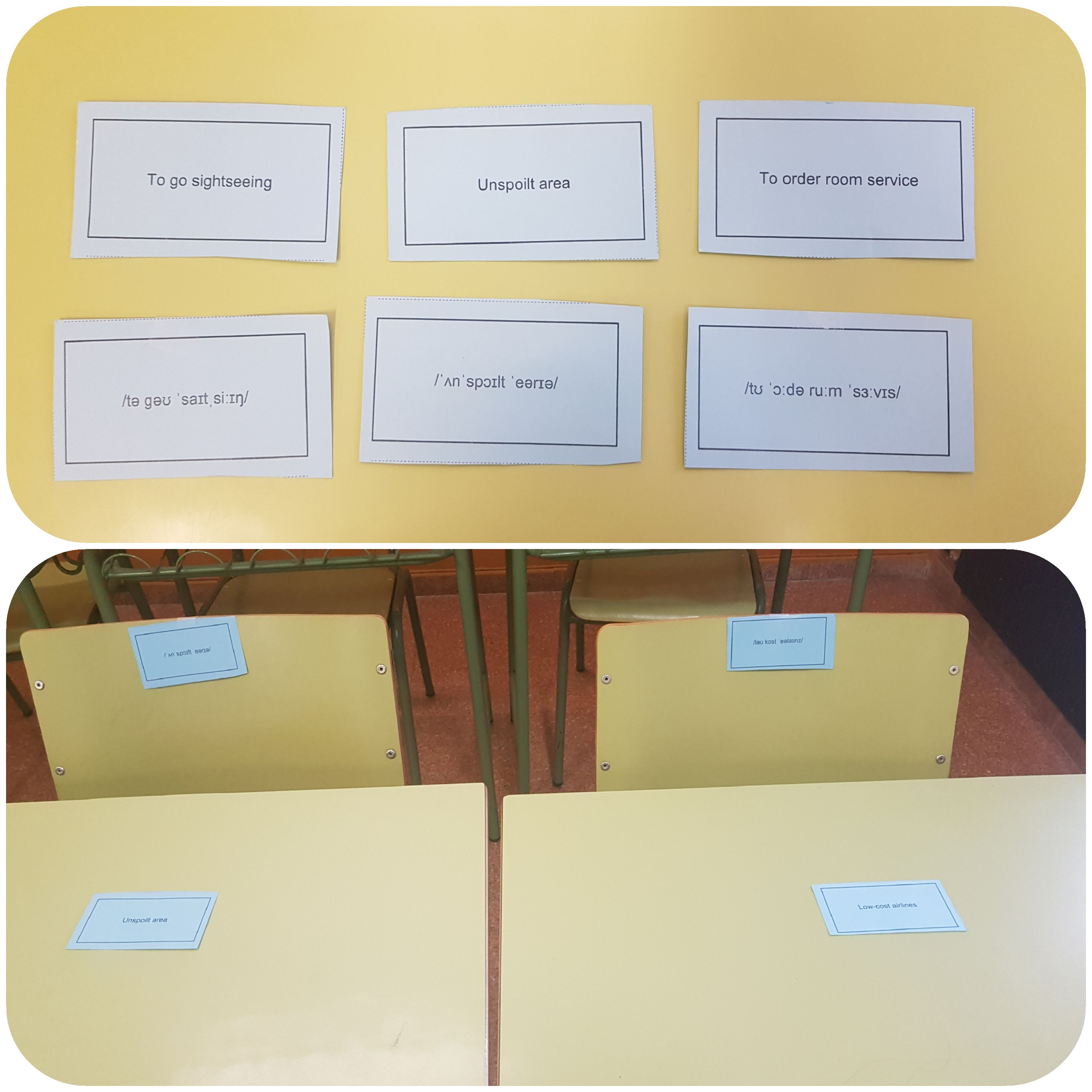
Using a presentation with some conversation questions I created on Spark Adobe some years ago, I asked my students to discuss the questions trying to use the collocations studied in Activity 4.
Every two questions, I gathered all the cards containing the collocations, shuffled them and redistributed them. This meant, standing up and finding the matching card with the corresponding pronunciation and then, sitting on that chair and talking to a different student.

Groups of 4 students. I displayed the first dilemma and asked students to pair up within the group and discuss for some minutes what they would do. Then, I asked them to share their ideas in their groups and finally, we had a whole-class discussion.
I created some posters using Canva.com and put them on the walls of the classroom. To form groups, I numbered them off and asked all number 1s to form a group, all number 2s to form a group, …etc. This way, I made sure they worked with different students.
Before the class, I put the 5 posters up on the walls of the class. Next to the posters, I also put 3 or 4 cards containing common collocations from Activity 4.
I instructed the groups to choose a poster and discuss the question in the poster, trying to use the vocabulary in the cards.
I did not set a time for each poster, I gave them the freedom to discuss as much as they wanted, but encouraged them to do at least three posters. I dedicated 25 minutes to this activity.
Posters here
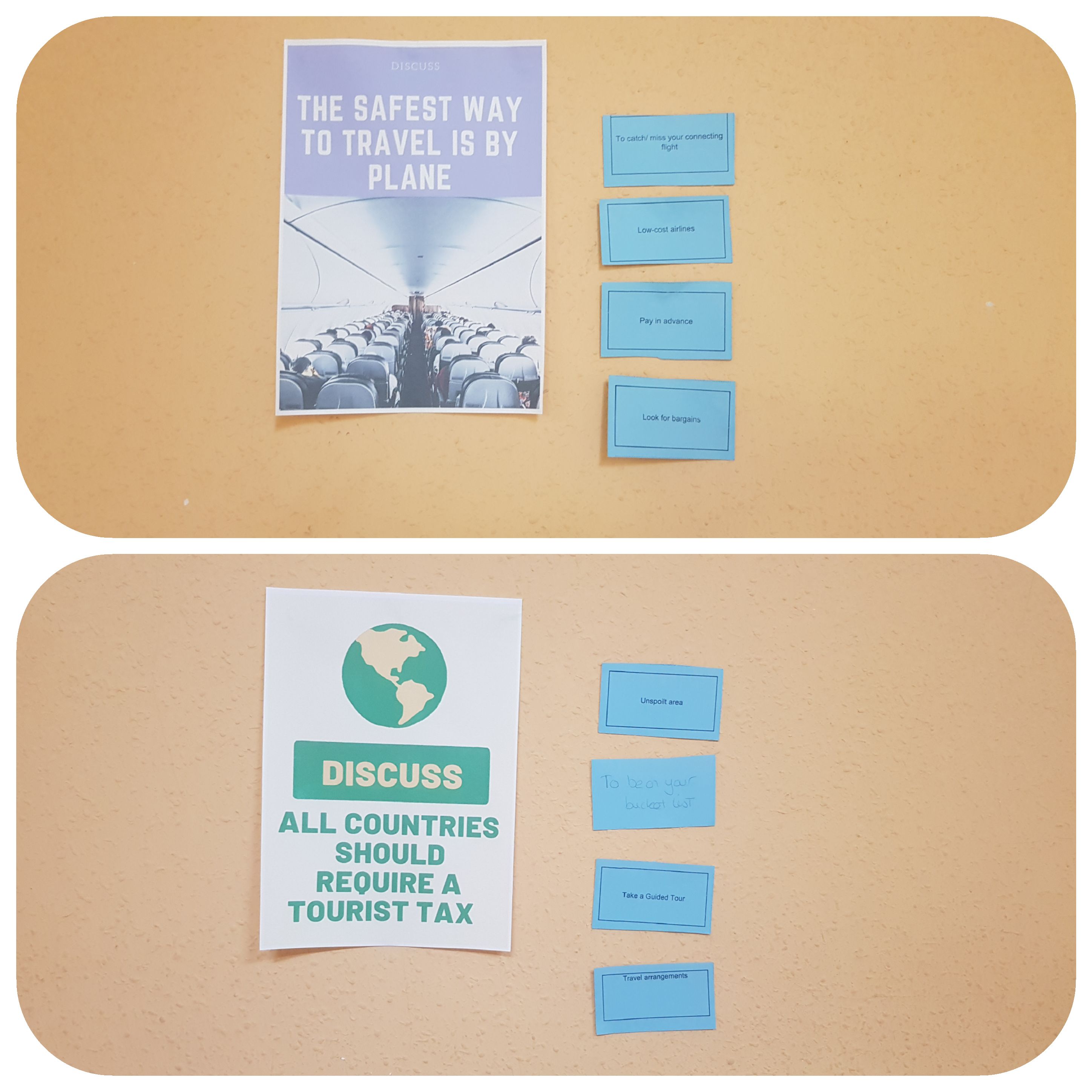
Giving your class a touch of modernity can’t get any easier. Ask your students to pick a city—any city in the world is at your fingertips-, and ask them to give a short speech about that city. Just open Google Maps, write the keywords in the search box, drag the Pegman and enjoy the virtual trip. For more details, click here
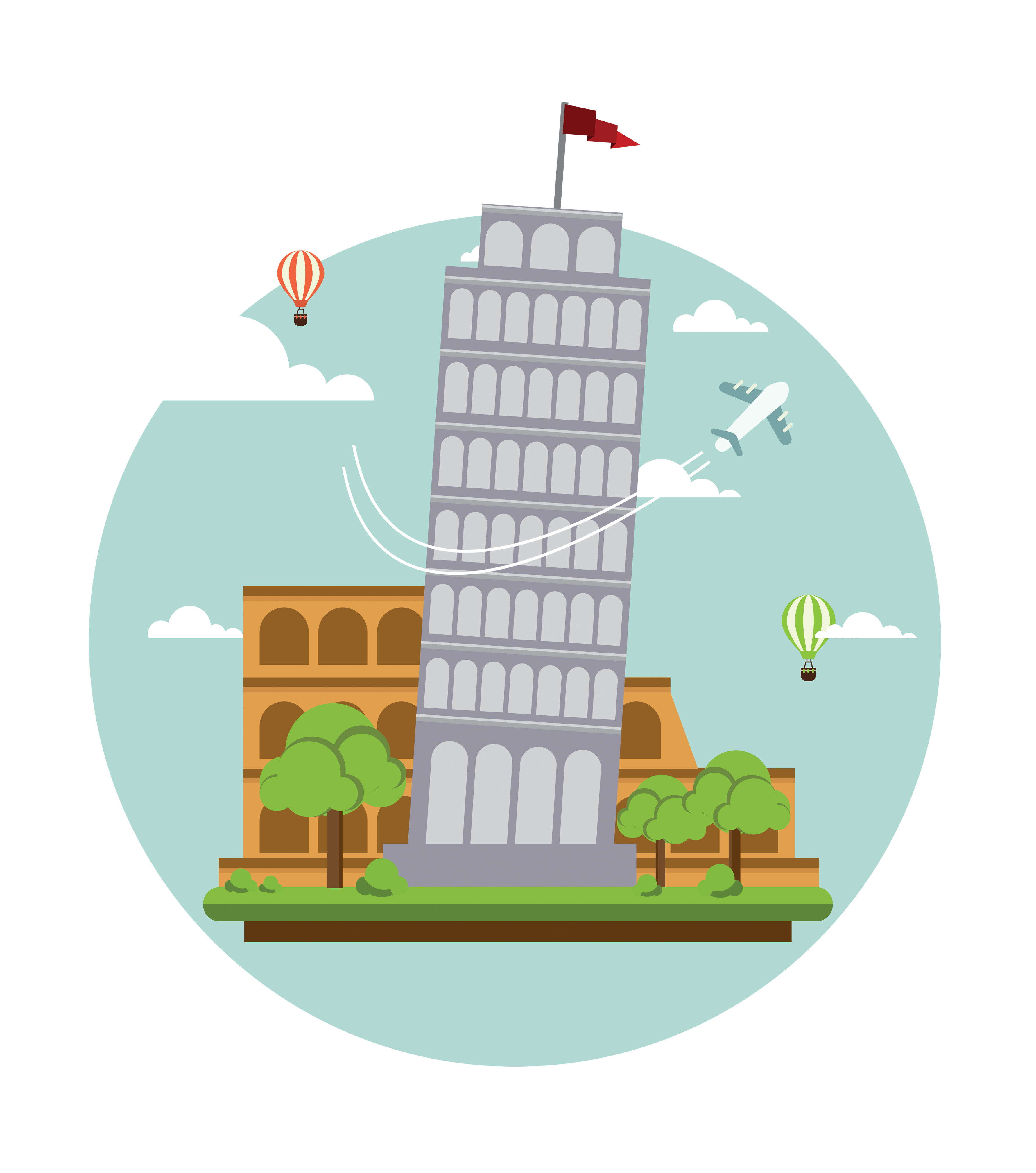
Related posts:

15 thoughts on “ 8 Engaging ESL Activities for Teaching about Travelling ”
Glad you find them useful!
Thanks, Cristina! You save my day! I’ve been struggling with warm-up activities that I can do with my intermediate students. And you gave me clues about that. Thank you so much!!
Glad you liked them!
Thank you for sharing your ideas. They are really helpful.
Thank you very useful and interesting ESL activities
Thanks. You’ve made my day!
You are amazing) Your work is fantastic! Thank you for sharing. Today you have inspired me to continue working and changing.
Thanks, Olga!!! Glad to have helped you!!
Christina!!! Thanks to your site I make my lessons the best in the world! It is perfect!
My advice?? One app at a time!! Once you master one, start with the next one!
Thanks Cristina for sharing everything… I´m learning to use all these apps to make my classes more interactive.. It’s driving me crazy hahaha… but I made it… I’ve already done a presentation with Adobe Spark and now I’m working on Genially.. uff.. hard work… thankssss
Hi Cristina, I did appreciate your tips. I teach English to Italian young learners, teenagers and adults and I really like the variety of tools you let students use as well as your teaching ideas in connection with technology. Congrats!
Yes. Seeing what other teachers are doing we can get better! Thanks for your comment!
Thank you very much Cristina! I always take inspiration from your lesson plans and I also love the tools that you use. Sharing is the best things that we, as teachers, can do!
Leave a Reply Cancel reply
Your e-mail address will not be published. Required fields are marked *
This site uses Akismet to reduce spam. Learn how your comment data is processed .
- Lesson Plans
- Craft Sheets
- Song Downloads
Classroom Readers
- Teacher Resources
- ESL Teacher's App
- Games & Activities
- Holidays / Festivals
- Teaching Tips
- ESL Articles
- ESL Online Games
- e-books for Teachers
- Teach Abroad
- How to print
- News / Blog
- Join ESL KidStuff
Resources and materials for ESL Kids teachers

LESSON PLANS

Other Materials
- e-books for teachers

Teaching Resources

Become a Member
Transport & Travel Lesson Plan
Lesson plans for esl kids teachers, this lesson plan is free.
Sign up for accompanying:
- ✔ worksheets
- ✔ homework sheets
- ✔ craft sheets
- ✔ flashcards
- ✔ song downloads
- ✔ classroom readers

Members get accompanying flashcards , worksheets, song and classroom reader .
- Time: 40 mins - 1 hour
- Objectives: - Identifying different transport vocab, Saying how you got to school
- Structures: "How Did You Get Here Today?", "I got here on foot / by ..."
- Target Vocab: on foot, bus, bicycle, car, train, boat, airplane, rocket
Lesson Materials:
- Flashcards: walk, bus, bicycle, car, train, boat, airplane, rocket
- Printables:
- - How Did You Get Here Today? Survey
- - How Did You Get Here Today? worksheet
- - Reader worksheet
- - How Did You Get Here Today? Song Poster
- - Warm Up & Wrap Up lesson sheet
- Readers: Let's Climb a Mountain!
- Songs: How Did You Get Here Today? song
- - white / black board with marker / chalk
- - blank paper to give students
- - CD / Tape player / Computer or something to play the song on
Other Lesson Plans
- Intro Lesson (Ages 3-7)
- Intro Lesson (Ages 8-12)
- Actions, Verbs & Tenses:
- Can - for Ability
- Morning Routines
- Daily Routines & Times of the Day
- Actions - Present Continuous
- Future Plans using "going to"
- Past Tense Activities - Regular Verbs
- Past Tense Activities - Irregular Verbs: Part 1
- Past Tense Activities - Irregular Verbs: Part 2
- Adjectives:
- Describing People
- Describing Things
- Comparing Things (Comparative Adjectives)
- Comparing Things (Superlative Adjectives)
- Adverbs of frequency
- Farm Animals
- Pets & Possessions
- Zoo Animals
- Parts of the Body
- Measuring Parts of the Body
- Classroom Objects
- Classroom Stationery
- Directions:
- Directions: left / right / forward / back
- Feelings & Emotions:
- Feelings & Emotions
- Health & Sickness:
- Health & Sickness
- Holidays & Festivals:
- Thanksgiving
- Likes, Dislikes & Favorites:
- Likes & Dislikes
- Favorites and Asking Why
- Nature & Our World:
- Numbers 1-10
- Numbers 1-20
- Places & Where We Live:
- Places & Where We Live
- Places in my Town
- Rooms of a House
- Prepositions of Location:
- Prepositions of Location
- Subject Pronouns
- Demonstrative pronouns
- Shopping & money
- Time, Days, Months, Seasons:
- Telling the Time
- Days of the Week
- Months of the Year
- Time Frequency
- Adverbs of Frequency
- Transport & Travel:
- Transport & Travel
- Wheels on the Bus
This is a nice lesson which not only teaches transportation vocabulary but also how to ask and reply to a question on how they arrived at their school.
Lesson Procedure:
Warm up and maintenance:.
See our " Warm Up & Wrap Up " page.
New Learning and Practice:
2. Teach transport vocab On the board, draw a simple picture of your school at one end of the board and your home (a simple house) at the other. Alternatively, you can use photos of both. Tell your students what each place is ("This is our school – here!", "This is my house. I live here!" (maybe draw a picture of yourself above the house)).
You are going to teach the vocab in order of the song you are going to sing a bit later on. Pull out the first card ("walk"). Put the card on the board between the school and your house. Say slowly "I got here on foot … on foot … on foot .", whilst doing the song gesture of walking on the spot. Get all of your students to stand up and walk on the spot as they say "on foot .. on foot …".
Next pull out the bus flashcard and replace the walk flashcard with it on the board. This time say "I got here by bus … by bus … by bus " whilst doing the song gesture of driving a bus and beeping the horn. Get all of your students to stand up and pretend to drive a bus and beep the horn as they say "by bus … by bus …".
Continue doing this for all of the cards and actions of the songs. For the last one – "rocket" – get everyone to count down from 10 to 1 and then jump as they blast off!
If you have a lot of students, give each student a piece of paper and have them draw 8 boxes (picture frames) on the paper. Tell everyone they are going to draw some pictures. For smaller classes have your students stand in front of one of the squares on the board. Say "Draw … I got here … by boat"). Everyone should draw a picture of a boat in their square (or the first square of the sheet of paper for students in larger classes). Give a minute for this (you can use an egg timer for fun!). When time is up say "STOP!". Now, you are the judge. Walk around looking at the pictures and give some comments ("hmmm, not bad" … "oh, very nice!", etc.). Finally, award a winner for the best drawing and get everyone to clap.
Now, erase the pictures on the board (or if using paper move onto the second square) and go onto the next vocab item (e.g. by bike). Again, judge the pictures and select a winner. Go through all of the pictures, each time electing a different winner – try and make sure everyone wins at least once. If you have more than 8 students you can choose joint winners.
4. Sing the " How Did You Get Here Today? " song Put the flashcards on the board in order of the song (or use our song poster). Run through the gestures (see above) first. Then play the song and sing along doing the gestures. If this is the first time to sing the song, play it a second time.
How did you get here today? How did you get here today?
Verse 1: I got here on foot I got here by bus I got here by bicycle I got here by car.
Verse 2: I got here by train I got here by boat I got here by airplane I got here by rocket.
10 – 9 – 8 – 7 – 6 – 5 – 4 – 3 – 2 – 1 Blast off!
( download MP3 here )
Gestures for "How Did You Get Here Today?"
Some simple actions can be used with this song:
- Do the question pose (palms up, puzzled look on face) for the question “How did you get here today?”, but point downwards (to the ground) for the “here” part.
- As the song plays do the following actions: • on foot: walk on the spot. • by bus: pretend to drive a bus and beep the horn. • by bicycle: pretend to be cycling and ring a bell. • by car: pretend to drive a car and beep the horn. • by train: do the train gesture – moving your hands around like a wheel and “chu-chu”ing. • by boat: do wave motions with your hands. • by airplane: pretend to be an airplane by holding your arms right out. • by rocket: put your arms above your head, finger tips touching to make a rocket shape. Keep this shape for the countdown and then jump for the blast off.
We also have a video that you can stream in class to sing along with (Internet connection required):

Teacher: What is this? (pointing at the car) Students: It's a car! Teacher: Yes, that's right! How did the man get to the top of the mountain? Students: By car. Teacher: Let's check ... (reading from the story) ... I got here by car. Right!
Get the students really involved in the story by asking lots of questions (e.g. eliciting colors) and getting them to do the actions of each vehicle.
After reading the story, give out a reader worksheet to each student and read through the story one more time (without stopping for questions, etc.) as students draw the modes of transport onto their worksheets. Then go through the answers as a class.
Alternatively, watch our video version of the reader (Internet connection required):
6. Practice asking and answering "How did you get here today?" with a class survey Before class, print out the How Did You Get Here Today? Survey . Draw enough columns for each student in the class and write their names at the top. Then copy enough for all of your students.
Start by modeling – hold up your survey and point out the names at the top. Choose one student and ask "How did you get here today?". Elicit a full answer (E.g. "I got here by bus") and show everyone how to fill in the survey (by drawing a circle in the correct cell). Do with a few students until everyone understands. If someone gives an impossible answer (e.g. rocket), show an expression of shock and then say, "Noooo, that can’t be right!" and have a laugh, but try to elicit their true answer. Then, give out a survey to everyone.
First, get everyone to find their own name and circle their answer. Then get everyone to mingle about asking and answering and filling in their surveys. When everyone has finished, complete your survey sheet by asking the class for the answers (e.g. "How did Naomi get here today?").
1. Assign Homework: " How did you get to school today? " worksheet. 2. Wrap up the lesson with some ideas from our " Warm Up & Wrap Up " page.
Print Outs / Worksheets:
Lesson Plan
How did you get here today? Survey
How did you get to school today?
Reader worksheet
Song poster
Flashcards:

Songs & Readers:

How Did You Get Here Today? song
Let's Climb a Mountain!
Additional materials:
Transport and travel vocab crossword
Transport and travel vocab word search
Additional worksheet - Let’s go!

- To view and print a flashcard or worksheet click on the thumbnail image.
- For detailed printing instructions, click here .
Join ESL KidStuff!
Full access to all resources on ESL KidStuff including lesson plans, flashcards, worksheets, craft sheets, song downloads, classroom readers, flashcards app and songs app.
Sounds good, right? Register Today!
Register now, only us$34 for a 1 year membership for access to all of our materials..
Flashcards, Worksheets, Songs & Readers are available to members only.
- Membership = US$34
Over 1,500 Flashcards
Over 1,000 Worksheets
Kids Songs to download
Apps for teaching
Would you like to become a member?
- (includes over 1,500 flashcards , 1,000 Worksheets , over 50 Craft Sheets , downloadable Songs , App for teaching and Classroom Readers )
- (Cost for 1 year)
Not sure? Why not take a look at the following pages:
10 reasons to become a member of ESL KidStuff
Take a quick Member's Tour
Expand your teaching through travel.
- Classroom Resources
- National Parks NGSS Storylines
- NGSS Storylines?? to Storylines!!
- Why Storylines Rock! | Plus an Overview of White Sands NP Storyline
- Supporting Students ASKING QUESTIONS Like Scientists
- Privacy Policy
- Terms & Services
- Affiliate Disclaimer
Adventure in the Classroom: Travel-Inspired Lesson Plan Format
- Posted by - Alyssa Weisenstein
- on - October 6, 2019
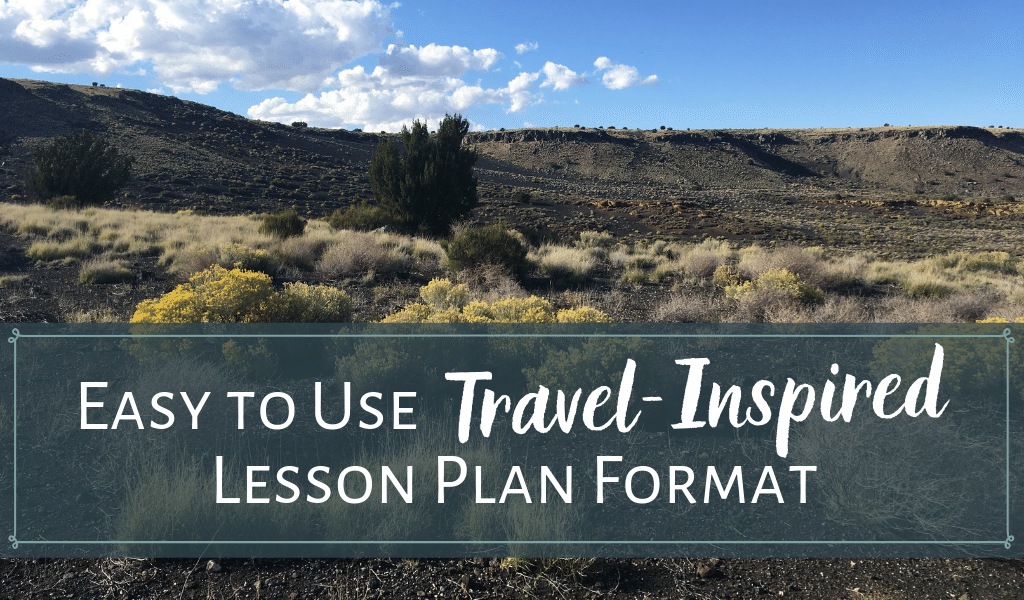
The volcanoes unit is one of my favorites to teach. Student buy-in is high because volcanoes are cool, but they have misconceptions that need to be debunked. How can I expect students to connect and truly understand concepts that are physically so far removed from them? Since I can’t bring them to the locations, the adventure has to start in the classroom. Follow this lesson plan format (with earth science examples!) to develop engaging travel-inspired learning.
During a volcano monitoring activity, students (freshmen in Southern Illinois – very far from any volcanoes) analyze the seismic activity on Hawaii to determine if a volcano eruption alert should be issued. They get all rowdy as the seismic activity increases and shout, “It’s going to blow!” “People are going to die, watch out!” The thing is though, Hawaii is formed by shield volcanoes, quiet eruptions of slow-moving lava, not Pompeii-style eruptions. Their vision of volcanoes is colored by what they’ve seen in movies and video games. Most have never even seen a real volcano.
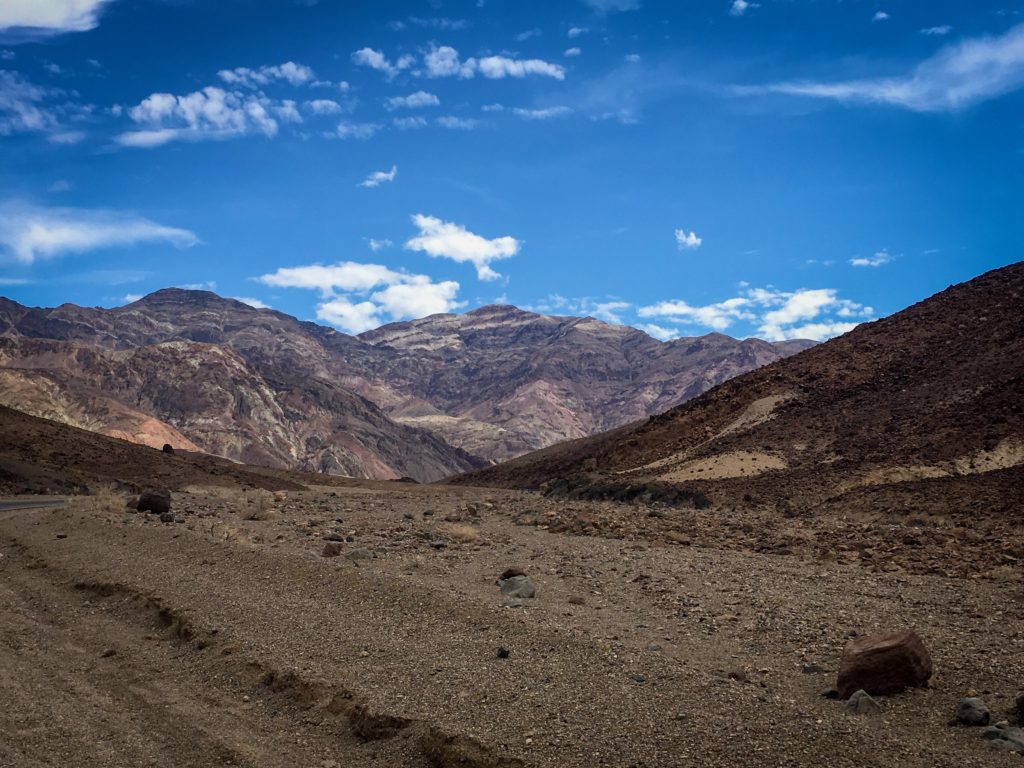
An activity is not enough for students to fully visualize the environments where the content occurs. I’ll break down each step of the lesson plan format to develop engaging travel-inspired learning. Sections of the volcanoes unit will be used as examples throughout, but these are the same steps I follow for all units.
Table of Contents
Goals of Travel-Inspired Learning
Student will:
- Create a connection to the content
- Envision processes and phenomena that occur throughout the world
- Develop as global citizens who acknowledge and respect different cultures
Getting Started
Don’t feel like you need to change an entire course or even unit to fit the destination-based learning model. Start by tying in a single lesson to a travel experience that really spoke to you. My destination-based lessons started with a simple two-minute story that connected to the content; it wasn’t part of an intentional planning process. I’ve developed the travel-inspired lesson plan format to help you transition to destination-based learning.
When you are passionate about what you’re teaching, students pick up on that. They’ll get a piece of the connection you’re sharing about your travel and how it connects to the content.
Exploration Passport
Each student has an Exploration Passport that they use for the entire course. Check out this article explaining Explorations Passports and for a FREE passport template. I do NOT let anyone take these out of the classroom. If they leave, you know they’re going to end up left in a locker, in a friend’s mom’s car, and who knows what other random places.
Exploration Passports include a United States map and a world map, so students know where we’re “adventuring.” This addition was made after an alarming number of students couldn’t find states on a U.S. map (including Illinois – where we live).
The pages within the passport are used as exit slips, learning reflections, and students’ own travel dreams.
Lesson Plan Format : Step-by-Step
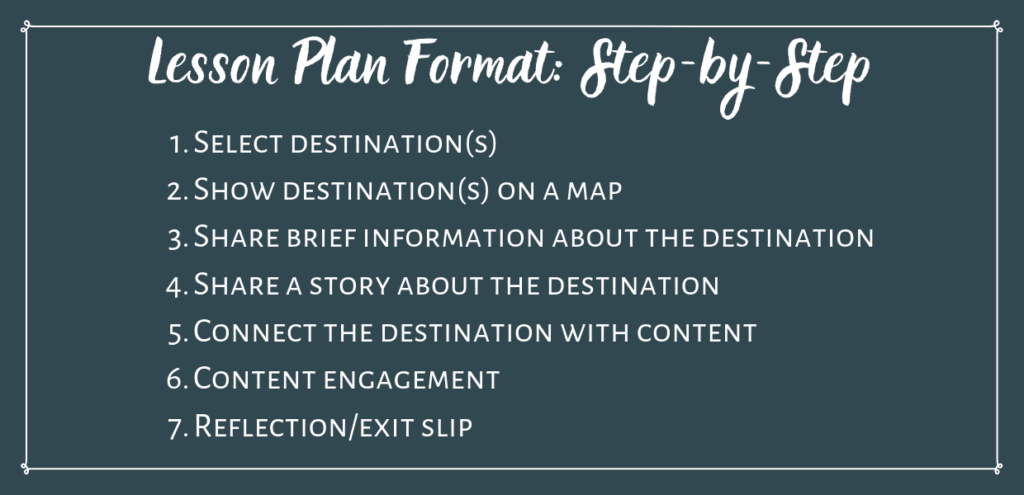
1. Select Destination(s)
You know your content and you know the travels you’ve loved the most. It’s okay to pick more than one destination that meets the needs of the current concepts. Try to stick to one-to-three destinations, otherwise the presentation becomes too overwhelming and jumbled.
Start your lesson by sharing the adventure destinations for the day. Pictures, a short video, or a quick story are a great introduction. Try to use your own materials when possible. Have a selfie on location? Students enjoy seeing pictures of you at the destinations and you know how they love selfies. Now, students are hooked to your lesson and they’ll be engaged when you tie in the content.
Volcano Example: Hawaiian Islands – Shield volcanoes Sunset Crater Volcano National Monument in Arizona – Cinder cone volcano Eyjafjallajӧkull* in Iceland – Composite volcano (also called strato volcano) *No, I cannot pronounce the name of that volcano. This Icelandic person can though.
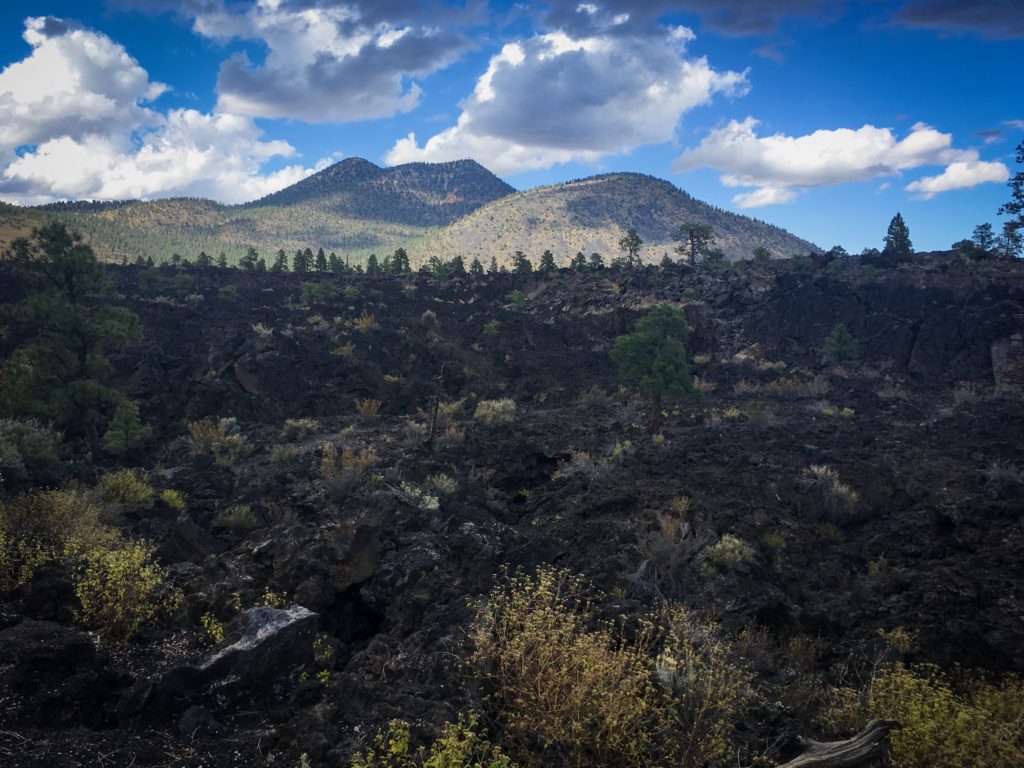
2. Show Destination(s) on the Map
Can you locate all 50 states on a U.S. map? Take a minute and try it out on this online quiz . How did you do? Too many high school students struggle with geography. I could no longer sit idly by and observe the geography illiteracy at the high school.
Show the U.S. and/or world maps with the locations, so students are oriented with your destinations. Encourage students to identify and mark the locations on their Exploration Passport maps.
Volcano Example:

3. Destination Information
Share brief information about the destinations with your students. This isn’t quite the time for content, but cultural information. I teach science, but I also have a responsibility for students to become well-rounded global citizens. I want people to be excited to learn about different areas of the world and the people who make those spaces unique.
Information Ideas
- Popular foods
- Popular activities
Volcano Example: Hawaii is the only state to have two official languages: English and Hawaiian. Although Iceland has the word Ice in the name, there is a lot of beautiful green space. Iceland has over 10,000 waterfalls. Arizona is not just a desert! Some areas of Arizona have mountains that are high enough in elevation to have annual snowfall. The average annual snowfall of Flagstaff is about 100 inches.
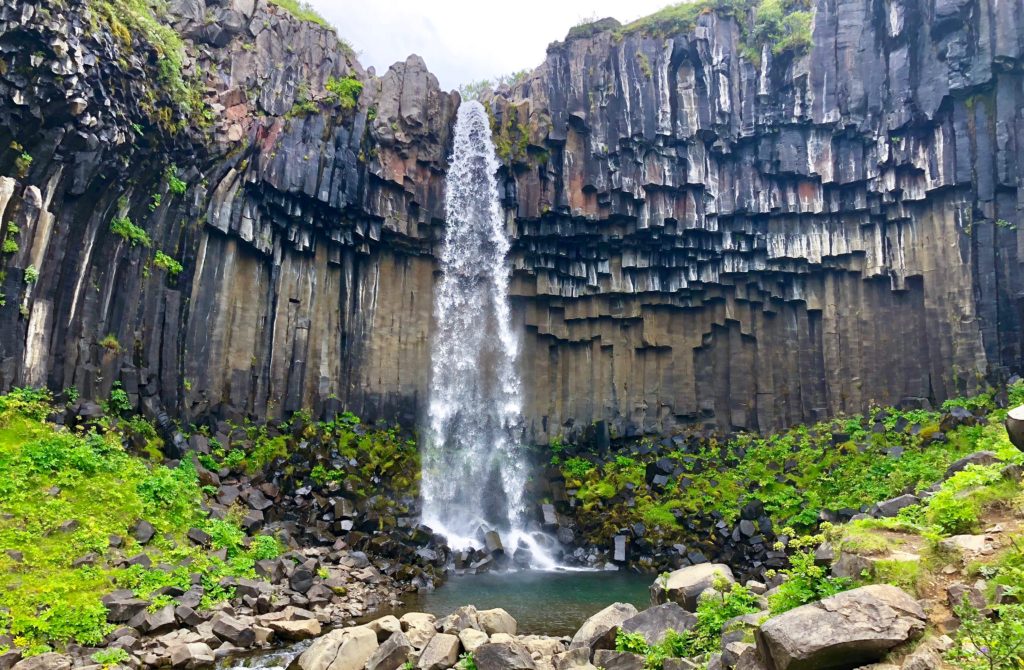
4. Share a Story
If you haven’t already, share a quick story about your experience at one of the destinations. Far off locations don’t seem real until you build a connection with them. You’re not sharing a novel here, so don’t sweat about it eating into your lesson time. Spending a moment engaging students will increase their overall learning better than more time can.
Volcano Example: Eyjafjallajӧkull last erupted in April 2010 over spring break and it released so much ash and dust that flights from Europe were grounded. A lady I worked with got stuck in Ireland for an extra week because she couldn’t fly out. “Shucks,” to being stuck on vacation for an extra week.
5. Connect with the Content
Now it’s time to connect your destinations to the content. I know there were several steps to get to this part, but by now your students are mesmerized by locations around the world and you have their attention. Quickly share with them where the lesson is headed.
Volcano Example: So, what do all of these locations have in common? They all were formed by volcanoes. However, volcanoes are not all the same. Some have violent eruptions, other quiet eruptions. Now, we’ll take a look at different types of volcanoes and how we can determine which type of volcano formed each destination.
This is the meat and potatoes of your lesson. The bulk of your time will be spent here diving into each of the concepts. Sometimes I finish the notes for a section in a day, other times it is spaced out over a week. You know your content better than anyone else, so you’ve got this part.
Volcano Example: You can access my exact unit slides! Teacher sharing is the best, so feel free to use them. COMING SOON!
7. Reflection/Exit Slip/Etc.
The final step of the lesson plan format is assessing students’ learning. It’s important for students to have time to process what they learned and share that information with you. I’d love to tell you I do this every day, but let’s be real, sometimes I’m just happy to make it through the hour unscathed. In all seriousness, we want to make sure our students are learning and quick formative assessments are a great way to do that. The strategy you select here does not really matter as long as you are doing something. Mix it up to keep students on their toes and play to different students’ strengths.
Ideas for Reflection/Exit Slip
- Students write answers to 2-3 main point questions
- One-word “what I learned”
- Draw images explaining a process
- Share something that surprised you or you didn’t know before
As you review students’ responses, quickly sort them into “got-it” or “not-quite” piles. Before starting the next day’s lesson, check-in with students who misunderstood a major concept.
Volcano Example: Check out the questions at the end of the volcano slides for the reflection questions. Students answer these questions in their Exploration Passports. I can look at them as students submit their passports or before the next class period. COMING SOON!
Pin it! Share it!
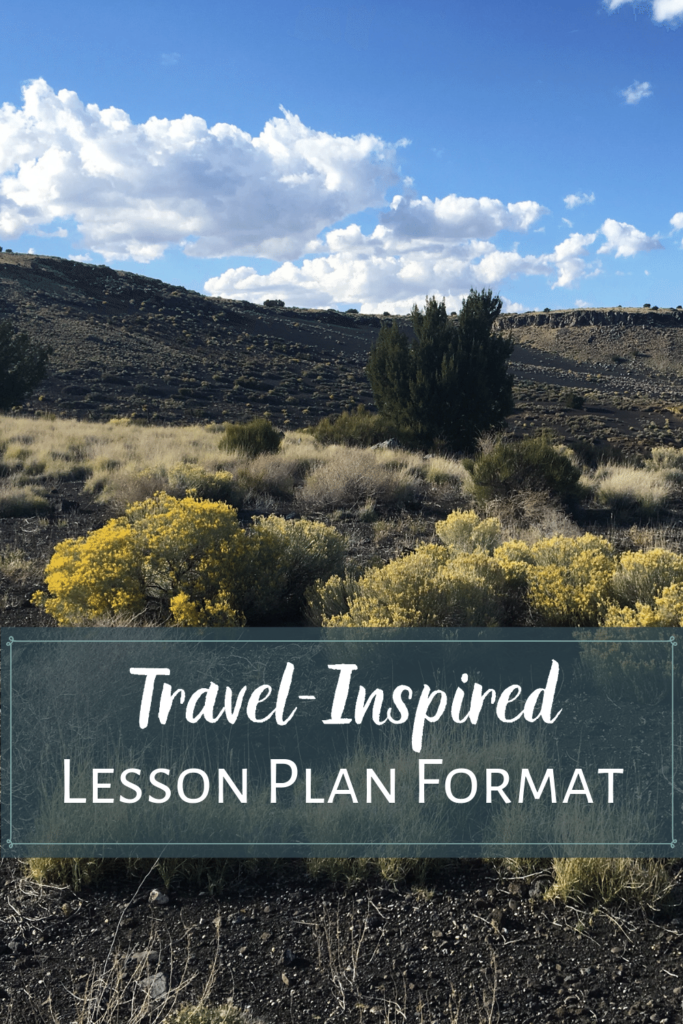
ESL Worksheets for Teachers
Check out our selection of worksheets filed under topic: travel and leisure. use the search filters on the left to refine your search..
FILTER LESSONS
Customised lessons
Worksheet type
Intermediate (B1-B2)
The topic of this lesson is ethical travel. Students will listen to a radio programme about "voluntourism" and get the chance to discuss the pros and cons of combining volunteering and tourism. Students will learn level-appropriate language to talk about ethical travel with a focus on adjectives. They will read a blog about things to avoid on holiday if they want to be more ethical when they travel and take part in a roleplay with a travel agent. There is the chance to write a short essay on a topic connected to ethical travel and, in addition to this, students have the real-world task of planning an ethical holiday.
by Richard Moon
Upper-intermediate (B2-C1)
This lesson is based on information from the Visit Greece website. Students will learn about Greek landmarks, geography and history and get some ideas of what to see and do if they visit Greece. Listening and reading skills will also be tested, and students will have the opportunity to prepare a presentation.
by Gillian Smylie
This lesson is based on information from the Visit Mexico website. Students will learn about Mexican landmarks, geography and history and get some ideas of what to see and do if they visit Mexico. Listening and reading skills will also be tested, and students will have the opportunity to prepare a presentation.
This lesson is based on information from the Visit Australia website. Students will learn about Australian landmarks, geography and history and get some ideas of what to see and do if they visit Australia. Exercises will cover vocabulary specific to Australia and some phrasal verbs. Listening and reading skills will also be tested, and students will have the opportunity to prepare a presentation.
This lesson is based on information from the Discover Northern Ireland website. Students will learn about Northern Irish landmarks and history and get some ideas about what to do and see if they visit Northern Ireland. Exercises will test students’ listening and reading skills and students will have the opportunity to give a presentation.
This lesson is based on information from the Wales.com and Visit Wales websites. Students will learn about Welsh landmarks, language and culture, and get some ideas about what to do and see if they visit Wales. Exercises will test students’ listening and reading skills and the language point will give students practice in asking for clarification when they are unsure about something. There is also an opportunity for students to plan their own trip or do some more research into an aspect of Welsh culture.
This lesson is based on information from the English Heritage and Natural England websites. Students will learn factual information about England's, tourism, politics and history. Exercises will test students’ listening and reading skills and the language point will give students practice in asking for information during a trip to England. There is also an opportunity for students to do some research into planning their own trip.
In this lesson, students will learn some practical information about the geography, politics and history of Scotland, and will get some ideas about what to see and do when visiting Scotland. Exercises will test students’ listening and reading skills and the ability to work out vocabulary from context. The grammar point relates to advice and suggestions , and students will get an opportunity to practise making suggestions and giving advice in a role-play exercise.
Note: this lesson can take 60-90mins.
This lesson is centred around the topic of swimming pools and helps students to describe and compare photographs for work, study, social and exam contexts. The target language includes describing main content, the use of present continuous, the use of the verb look and modals of speculation, and how to organise a spoken description. Students activate the language in a pair work speaking activity and there are two optional extension activities to choose from: a creative writing activity and a caption matching activity.
by Stephanie Hisrchman
This ESP worksheet presents a list of discussion questions designed to encourage hotel managers to talk at length about their profession.
This ESP worksheet presents a list of discussion questions designed to encourage tour operators and agents to talk at length about their profession.
Pre-intermediate (A2-B1)
Students define some vocabulary related to cars and driving before reading an article about self-driving cars. The language point is making predictions about the future using will , might , may and could , as well as adverbs and likely / unlikely . Students activate the language in a discussion activity about self-driving cars and drones. There is also an optional extension activity about expressions with the word drive .
by Stephanie Hirshman
Students share experiences of having a day out before listening to a three-way conversation about planning a day out. They are introduced to language for making suggestions ( shall , let’s and how about ), compare how will and be going to are used for making plans and offers, and review the use of will and be going to for predictions. Students plan their own day out in a pair work speaking activity. There is also an optional extension relating to snack foods.
by Stephanie Hirschman
Students watch a short video about a location app called What3words . They then read an article to find out more about the app. The lesson includes vocabulary development and discussion, as well as a language point about adjective phrases with numbers and a pronunciation game with similar sounding words. There is an optional extension activity which provides extra practice with the vocabulary from the lesson.
by Stephanie Hirschman
Students consider what people do on a gap year and why, before listening to a dialogue about gap year plans. They then compare and contrast the forms for talking about future arrangements, plans or intentions and predictions. The language is activated in a speaking activity where students plan and describe a gap year. There is also an optional extension activity showing how gap year experiences could be described on a CV.
Search form
- A2 listening
Travelling abroad

Listen to the five airport announcements and do the exercises to practise and improve your listening skills.
Instructions
Do the preparation exercise before you listen. Then do the other exercises to check your understanding.
Preparation
Do this exercise before you listen.
Good morning. This is an announcement for all passengers travelling on the 9:25 flight TOM1223 to Rome. This flight is delayed by two hours because of bad weather.
Would all passengers travelling to Tokyo on flight FR3421 please have your boarding passes and passports ready for boarding. Flight FR3421 now boarding at gate 21.
This is the final boarding call for passengers Gemma and Ryan Grey flying to Athens on flight EZ9753. Your flight is ready to leave. Please go to gate 14 immediately. The doors of the plane will close in five minutes. Final boarding call for passengers Gemma and Ryan Grey.
This is an announcement for passengers travelling to Amsterdam on flight KL1050. Will all passengers with express boarding tickets and passengers travelling with young children please go to gate 6 for boarding. That's all passengers with express boarding tickets and passengers travelling with young children go to gate 6 for boarding. Thank you.
Good evening, ladies and gentlemen. We have landed at JFK airport in New York where the local time is 18:30 and the temperature is 76º. We hope you have enjoyed your flight with American Airlines this evening and wish you a very safe journey to your final destination.
Check your understanding: matching
Check your understanding: typing, worksheets and downloads.
Tell us about the last time you took a flight somewhere!

Sign up to our newsletter for LearnEnglish Teens
We will process your data to send you our newsletter and updates based on your consent. You can unsubscribe at any time by clicking the "unsubscribe" link at the bottom of every email. Read our privacy policy for more information.
Tim's Free English Lesson Plans
Use them, share them, comment on them, and share my link in return.
Travelling: Expressions and Discussion – My Ideal Holiday

Follow me on twitter @ RobbioDobbio
Just a quick note…
Before you use these materials… We’ve created a new podcast aimed at B2+ level English students and teachers alike. You can listen for free at our SoundCloud page below. You can download teacher’s notes to accompany them from our Facebook page or from this blog. All comments and feedback welcome! Give us a like and a share. https://www.facebook.com/2tspodcast/
Or listen on Spotify:
This is a vocabulary and conversation activity for higher levels (high B2+) on the subject of travelling. Download the student handout and powerpoint below:
Holiday Destinations – Powerpoint
UPDATE: I’ve combined this lesson plan with the “My Ideal Holiday” lesson.
In pairs students discuss the following questions
- What’s the best place you’ve ever visited?
- How often do you travel?
- Do you have any trips planned for the near future?
Travel Expressions
Give out the handout. Have students read the texts and decide who they are most similar to. Let them share their ideas in pairs or small groups and give reasons for their answers.
Meaning Match
Have students match the expressions in bold with the definitions at the bottom.
- get the travel bug.
- catch some rays
- travel light
- at the crack of dawn
- savour local delicacies
- sit and watch the world go by
- feel right at home
- experience a culture shock
- watch one’s back
- a culture vulture
- have everything planned out
- travel on a shoestring
- see how the mood takes one
- off the beaten track
Students complete the sentences with the correct expressions:
Students discuss the following questions in groups of 3.
- Do you travel light ? If so, how do you decide what to pack?
- You have to watch your back when you’re travelling alone; there are a lot of dangerous people out there. Do you agree?
- Which place that you’ve visited was the biggest culture shock ? Where did you feel right at home ? Why?
- Do you normally travel on a shoestring or live it up ? How can you save money while travelling? Would you consider hitchhiking or couchsurfing?
- Have you got the travel bug ? Have you got itchy feet ? If so, where’s next on the list?
- Do you like to pack a lot in/have a full plate or see how the mood takes you when you’re travelling?
- What’s the perfect place to sit and watch the world go by for you?
- How important is it for you to catch some rays when you’re on holiday?
- How do you choose a holiday destination? Are you a culture vulture ?
Holiday Destinations Discussion
Project the powerpoint, tell students that they are going to choose a holiday destination in their groups from a number of popular places around the world.
Show them the second slide and have them copy down the different expressions:
Then have students discuss the different holiday destinations in groups and decide on one which the whole group would like to visit.
Students could write a CAE/CPE style Proposal composition about the process of deciding on a holiday destination for the group. They could evaluate the different merits and drawbacks of three of the destinations from the powerpoint and recommend one as the destination for an end of year trip.
Alternatively they could write a review of a holiday to one of the places.
Share this:
Author: Tim Warre
Barcelona based English Teacher, blogger and sometime actor and director. View All Posts
7 thoughts on “ Travelling: Expressions and Discussion – My Ideal Holiday ”
- Pingback: Travelling: Expressions and Discussion | ESL re...
Hi there Thanks a lot the information was useful I have used them for my class and it really worked Thank you indeed Peyman
Great lesson plan! thank you so much
These are excellent ideas for a Lesson Plan, I will definitely use it when I start my teaching career. Thank you Tim Regards Beverly Liedtke I don’t have a website only email: [email protected]
I will try these in my class
Thanks Tim It’s great and I will use them too …
Namaste Ranger Yogini B
South Africa [email protected]
Stunning vocabulary lesson plan, I think my pupils will enjoy doing such activity. They are useful expression in every day life.
Leave a Reply Cancel reply
Discover more from tim's free english lesson plans.
Subscribe now to keep reading and get access to the full archive.
Type your email…
Continue reading
Breaking News English Lesson: Travel Plans
Home | help this site, 35% of japanese people will never travel again (2nd january, 2023).
- 27-page lesson (40 exercises)
- 2-page MINI lesson
- All 3 graded readings
- North American & British English
- 20 questions
- Listen & spell
- 4-speed reading
- Text jumble
- The / An / A
- Prepositions
- Missing letters
- Initials only
- Missing words
The Reading / Listening - Travel Plans - Level 6
People are travelling internationally again after the hiatus that was caused by the coronavirus pandemic and the subsequent lockdowns. Many people are using the money they saved while borders were closed to embark on their bucket list trips. However, others are showing a reluctance to dust off their passports. A travel report from the Morning Consult website analyzed 16,000 surveys from people in 15 countries. The site found that 15 per cent of South Koreans and 14 per cent of Chinese and Americans, "never want to travel again". Those most unwilling to travel were the Japanese. The report stated that almost 35 per cent of Japanese respondents claimed they never wanted to leave Japan. There are many reasons for Japanese travellers being disinclined to venture overseas. One is a new-found desire to explore the culinary and cultural delights Japan has to offer. Many people travelled domestically during the pandemic and re-discovered their love of Japan's stunning nature and heritage. A Kyoto tour guide said: "I've been constantly amazed at my clients' reactions at seeing the sights of this city. I've never known Japanese people to be so engrossed in their history and tradition." Other reasons are cost and a desire to be green. Tokyo resident Kai Ueno said: "Flying isn't sustainable in this climate crisis. I'd much rather travel locally and spend the air fare on nicer hotels, restaurants and experiences in Japan."
Try the same news story at these easier levels:
Travel Plans - Level 4 or Travel Plans - Level 5
- https://www. cnbc.com /2023/12/19/dont-want-to-travel-many-in-japan-say-theyll-never-travel-again.html
- https://www. euronews.com /travel/2023/12/19/more-than-a-third-of-people-in-this-asian-country-dont-ever-plan-to-travel-again-heres-why
- https://go. morningconsult.com /State-of-Travel-and-Hospitality-Report-Download.html
Make sure you try all of the online activities for this reading and listening - There are dictations, multiple choice activities, drag and drop activities, sentence jumbles, which word activities, text reconstructions, spelling, gap fills and a whole lot more. Please enjoy :-)
Buy my 1,000 Ideas and Activities for Language Teachers eBook. It has hundreds of ideas, activity templates, reproducible activities, and more.
Take a look...
"Much has been said and written on the utility of newspapers; but one principal advantage which might be derived from these publications has been neglected; we mean that of reading them in schools." The Portland Eastern Herald (June 8, 1795)
"News is history in its first and best form, its vivid and fascinating form, and...history is the pale and tranquil reflection of it." Mark Twain, in his autobiography (1906)
"Current events provide authentic learning experiences for students at all grade levels.... In studying current events, students are required to use a range of cognitive, affective, critical thinking and research skills." Haas, M. and Laughlin, M. (2000) Teaching Current Events: It's Status in Social Studies Today.
- E-mail this to a friend
--> 1. TRAVEL PLANS: Students walk around the class and talk to other students about travel plans. Change partners often and share your findings. 2. CHAT: In pairs / groups, talk about these topics or words from the article. What will the article say about them? What can you say about these words and your life? travelling / pandemic / lockdown / bucket list / dust / passport / survey / website / overseas / culinary delights / nature / heritage / sights / climate crisis / air fare / hotel Have a chat about the topics you liked. Change topics and partners frequently. 3. OVERSEAS TRAVEL: Students A strongly believe overseas travel is the best education in the world; Students B strongly believe it isn't. Change partners again and talk about your conversations. 4. MY COUNTRY'S DELIGHTS: What are your country's delights? What makes them so good? Complete this table with your partner(s). Change partners often and share what you wrote. Delights Why? Nature Festivals Sights Food Museums Entertainment MY e-BOOK See a sample 5. PASSPORT: Spend one minute writing down all of the different words you associate with the word "passport". Share your words with your partner(s) and talk about them. Together, put the words into different categories. 6. DESTINATIONS: Rank these with your partner. Put the best destinations at the top. Change partners often and share your rankings. Kyoto London Rome Rio de Janeiro Nairobi Shanghai Delhi Sydney Vocabulary Paragraph 1 1. hiatus a. A number of experiences or achievements that a person hopes to have or do during their lifetime. 2. subsequent b. A person who replies to something, like supplying information for a questionnaire or responding to an advertisement. 3. embark c. A pause or break in continuity in a sequence or activity. 4. bucket list d. Begin a course of action or a journey. 5. reluctance e. Coming after something in time; following. 6. dust off f. Unwillingness to do something. 7. respondent g. Bring something out for use again after a long period of non-use. Paragraph 2 8. disinclined h. Start a (risky or daring) journey or course of action. 9. venture i. Of or for cooking. 10. culinary j. Put all of one's attention or interest on something. 11. stunning k. Being unwilling or reluctant. 12. heritage l. Conserving or keeping an environmental balance by avoiding using up natural resources. 13. engrossed m. Valued objects and qualities such as historic buildings and cultural traditions that have been passed down from previous generations. 14. sustainable n. Extremely impressive or attractive. Before reading / listening 1. TRUE / FALSE: Read the headline. Guess if 1-8 below are true (T) or false (F). The article says a hiatus caused coronavirus lockdowns. T / F Many people tripped over buckets during the coronavirus pandemic. T / F A website conducted a survey on people from 15 countries. T / F Chinese people were less reluctant to travel than South Koreans. T / F Many Japanese people wanted to explore Japan more. T / F A tour guide in Kyoto was amazed by the city's sights. T / F The tour guide said her clients were really interested in Japan's history. T / F Some Japanese people wanted to spend money on hotels in Japan. T / F 2. SYNONYM MATCH: Match the following synonyms from the article. hiatus subsequent embark analyzed unwilling venture delights stunning engrossed spend pleasures reluctant examined following travel absorbed break lay out start remarkable 3. PHRASE MATCH: (Sometimes more than one choice is possible.) after the hiatus that was the money they saved embark on their bucket showing a reluctance to 35 per cent of Japanese being disinclined to venture Japan's stunning nature I've never known Japanese people Flying isn't spend the air fare sustainable list trips respondents overseas and heritage caused by the coronavirus pandemic to be so engrossed while borders were closed on nicer hotels dust off their passports Gap fill Put these words into the spaces in the paragraph below. bucket unwilling dust respondents hiatus stated lockdowns surveys
People are travelling internationally again after the (1) _____________________ that was caused by the coronavirus pandemic and the subsequent (2) _____________________. Many people are using the money they saved while borders were closed to embark on their (3) _____________________ list trips. However, others are showing a reluctance to (4) _____________________ off their passports. A travel report from the Morning Consult website analyzed 16,000 (5) _____________________ from people in 15 countries. The site found that 15 per cent of South Koreans and 14 per cent of Chinese and Americans, "never want to travel again". Those most (6) _____________________ to travel were the Japanese. The report (7) _____________________ that almost 35 per cent of Japanese (8) _____________________ claimed they never wanted to leave Japan.
desire stunning locally venture sustainable constantly delights engrossed
There are many reasons for Japanese travellers being disinclined to (9) _____________________ overseas. One is a new-found desire to explore the culinary and cultural (10) _____________________ Japan has to offer. Many people travelled domestically during the pandemic and re-discovered their love of Japan's (11) _____________________ nature and heritage. A Kyoto tour guide said: "I've been (12) _____________________ amazed at my clients' reactions at seeing the sights of this city. I've never known Japanese people to be so (13) _____________________ in their history and tradition." Other reasons are cost and a (14) _____________________ to be green. Tokyo resident Kai Ueno said: "Flying isn't (15) _____________________ in this climate crisis. I'd much rather travel (16) _____________________ and spend the air fare on nicer hotels, restaurants and experiences in Japan."
Listening — Guess the answers. Listen to check.
1) People are travelling internationally again ______ a. after the high attics b. after the "hi" at us c. after the hiatus d. after the high eight us 2) that was caused by the coronavirus pandemic and ______ a. the subsequence lockdowns b. the subsequent lockdowns c. the subsequently lockdowns d. the consequent lockdowns 3) the money they saved while borders were closed to embark on their ______ a. bucket wrist trips b. bucket risk trips c. bucket lips trips d. bucket list trips 4) However, others are showing a reluctance to dust ______ a. oft their passports b. toff their passports c. of their passports d. off their passports 5) The report stated that almost 35 per cent of ______ a. Japanese responders claimed b. Japanese respond ants claimed c. Japanese respond dents claimed d. Japanese respondents claimed
6) There are many reasons for Japanese travellers being disinclined ______ a. to venture overseas b. to adventure overseas c. tour venture overseas d. to vent chair overseas 7) One is a new-found desire to explore the culinary ______ a. and cultural delights b. and culturally delights c. and cultural dill lights d. and culturally dates 8) and re-discovered their love of Japan's stunning ______ a. nature and hermitage b. nature end hermitage c. natural end heritage d. nature and heritage 9) the sights of this city. I've never known Japanese people to ______ a. be so embossed b. be so win grossed c. be sewing grossed d. be so engrossed 10) isn't sustainable in this climate crisis. I'd much rather travel locally and spend ______ a. the year fare b. there fare c. the air fare d. thee air fair
Listening — Listen and fill in the gaps
People are travelling internationally again after (1) ____________________ was caused by the coronavirus pandemic and the subsequent lockdowns. Many people are using the money they (2) ____________________ were closed to embark on their bucket list trips. However, others are showing a (3) ____________________ off their passports. A travel report from the Morning Consult website analyzed 16,000 (4) ____________________ in 15 countries. The site found that 15 per cent of South Koreans and 14 per cent of Chinese and Americans, "never want to travel again". Those most (5) ____________________ were the Japanese. The report stated that almost 35 per cent of Japanese (6) ____________________ never wanted to leave Japan.
There are many reasons for Japanese travellers being disinclined (7) ____________________. One is a new-found desire to explore the culinary (8) ____________________ Japan has to offer. Many people travelled domestically during the pandemic and re-discovered their love of Japan's stunning (9) ____________________. A Kyoto tour guide said: "I've been constantly amazed at my clients' reactions at (10) ____________________ of this city. I've never known Japanese people to (11) ____________________ in their history and tradition." Other reasons are cost and a desire to be green. Tokyo resident Kai Ueno said: "Flying isn't (12) ____________________ climate crisis. I'd much rather travel locally and spend the air fare on nicer hotels, restaurants and experiences in Japan."
Comprehension questions
- What was a hiatus in international travel caused by?
- What were closed that allowed people to save money?
- What kind of list was mentioned in paragraph one?
- How many people participated in the travel survey?
- Which nationality were the least willing to travel overseas?
- Where were Japanese people disinclined to venture?
- What did many Japanese people fall in love with again?
- What did a tour guide say Japanese people were engrossed in?
- What did a resident of Kyoto say was not sustainable?
- What would many Japanese prefer to spend their money on?
Multiple choice quiz
1) What was a hiatus in international travel caused by? a) fuel shortages b) coronavirus lockdowns c) terrorism d) ash from a volcano 2) What were closed that allowed people to save money? a) wallets b) banks c) shops d) borders 3) What kind of list was mentioned in paragraph one? a) a reading list b) a to-do list c) a bucket list d) a top-ten list 4) How many people participated in the travel survey? a) 16,000 b) 17,000 c) 18,000 d) 19,000
6) Where were Japanese people disinclined to venture? a) overseas b) into mountains c) into business partnerships d) into relationships 7) What did many Japanese people fall in love with again? a) themselves b) their partners c) Japan's nature and heritage d) flying 8) What did a tour guide say Japanese people were engrossed in? a) history and tradition b) food c) maps d) travel books 9) What did a resident of Kyoto say was not sustainable? a) population growth b) cars c) tourism d) flying
After reading / listening
1. WORD SEARCH: Look in your dictionary / computer to find collocates, other meanings, information, synonyms … for the words...
'travel' ________________ ________________ ________________ ________________ ________________ ________________ ________________ ________________ and 'plan' . ________________ ________________ ________________ ________________ ________________ ________________ ________________ ________________
• Share your findings with your partners.
• Make questions using the words you found.
• Ask your partner / group your questions.
2. ARTICLE QUESTIONS: Look back at the article and write down some questions you would like to ask the class about the text.
3. GAP FILL: In pairs / groups, compare your answers to this exercise. Check your answers. Talk about the words from the activity. Were they new, interesting, worth learning…?
4. VOCABULARY: Circle any words you do not understand. In groups, pool unknown words and use dictionaries to find their meanings.
5. TEST EACH OTHER: Look at the words below. With your partner, try to recall how they were used in the text:
caused bucket dust 16,000 unwilling claimed venture delights love amazed cost rather
Student survey
Write five GOOD questions about this topic in the table. Do this in pairs. Each student must write the questions on his / her own paper. When you have finished, interview other students. Write down their answers.
(Please look at page 12 of the PDF to see a photocopiable example of this activity.)
Discussion - Travel Plans
STUDENT A’s QUESTIONS (Do not show these to student B)
- What did you think when you read the headline?
- What images are in your mind when you hear the word 'travel'?
- What are your travel plans for this year?
- How important is it to travel?
- Did the coronavirus pandemic affect your travel plans?
- What do you think of your passport?
- How often do you dust off your passport?
- Why might people not want to travel overseas?
- What countries or places are on your bucket list?
- Should we avoid international travel to protect the environment?
STUDENT B’s QUESTIONS (Do not show these to student A)
- Did you like reading this article? Why/not?
- What do you think of when you hear the word 'plan'?
- What do you think about what you read?
- What do you think of international travel?
- What culinary and cultural delights are there in your country?
- How stunning is your country's nature?
- Do you think flying is unsustainable?
- Is it better to spend money on an air fare or a gorgeous hotel?
- Why do many people get the travel bug?
- What questions would you like to ask a frequent traveller?
Discussion — Write your own questions
(a) ________________ (b) ________________ (c) ________________ (d) ________________ (e) ________________
(f) ________________ (g) ________________ (h) ________________ (i) ________________ (j) ________________
Language — Cloze (Gap-fill)
People are travelling internationally again after the (1) ____ that was caused by the coronavirus pandemic and the subsequent lockdowns. Many people are using the money they saved while borders were closed to embark (2) ____ their bucket list trips. However, others are showing a reluctance to (3) ____ off their passports. A travel report from the Morning Consult website (4) ____ 16,000 surveys from people in 15 countries. The site found that 15 per cent of South Koreans and 14 per cent of Chinese and Americans, "never want to travel again". Those most (5) ____ to travel were the Japanese. The report stated that almost 35 per cent of Japanese respondents (6) ____ they never wanted to leave Japan.
There are many reasons for Japanese travellers being disinclined to (7) ____ overseas. One is a new-found desire to explore the (8) ____ and cultural delights Japan has to offer. Many people travelled domestically during the pandemic and re-discovered their love of Japan's (9) ____ nature and heritage. A Kyoto tour guide said: "I've been constantly amazed at my clients' reactions at seeing the sights of this city. I've never known Japanese people to be so (10) ____ in their history and tradition." Other reasons are cost and a desire to be green. Tokyo resident Kai Ueno said: "Flying isn't sustainable (11) ____ this climate crisis. I'd much (12) ____ travel locally and spend the air fare on nicer hotels, restaurants and experiences in Japan."
Which of these words go in the above text?
- (a) ratios (b) hiatus (c) cactus (d) herbivorous
- (a) of (b) by (c) at (d) on
- (a) lust (b) dust (c) bust (d) must
- (a) paralyzed (b) catalyzed (c) analyzed (d) hydrolyzed
- (a) unwilling (b) unwitting (c) unfailing (d) unfettering
- (a) claimed (b) clammed (c) calmed (d) clamped
- (a) vulture (b) couture (c) future (d) venture
- (a) culinary (b) veterinary (c) luminary (d) pulmonary
- (a) tuning (b) stunning (c) turning (d) attuning
- (a) embossed (b) en masse (c) engrossed (d) enmeshed
- (a) at (b) on (c) in (d) of
- (a) elect (b) rather (c) choice (d) prefer
Paragraph 1
- after the iasuth that was caused
- and the qeetnbussu lockdowns
- akberm on their bucket list trips
- showing a urecntecla to dust off their passports
- Those most liwunlnig to travel
- 35 per cent of Japanese enosesdtnpr
Paragraph 2
- travellers being lneiinidcsd to venture overseas
- explore the unlircay and cultural delights
- Japan's stunning nature and gretaehi
- eedsognrs in their history and tradition
- Tokyo idnerset Kai Ueno
- Flying isn't ablnseasiut
Put the text back together
(...) crisis. I'd much rather travel locally and spend the air fare on nicer hotels, restaurants and experiences in Japan." (...) of this city. I've never known Japanese people to be so engrossed in their history and tradition." Other (...) heritage. A Kyoto tour guide said: "I've been constantly amazed at my clients' reactions at seeing the sights (...) desire to explore the culinary and cultural delights Japan has to offer. Many people travelled ( 1 ) People are travelling internationally again after the hiatus that was caused by the coronavirus pandemic (...) and the subsequent lockdowns. Many people are using the money they saved while borders (...) domestically during the pandemic and re-discovered their love of Japan's stunning nature and (...) from people in 15 countries. The site found that 15 per cent of South Koreans and 14 per cent of Chinese and Americans, "never (...) were closed to embark on their bucket list trips. However, others are showing a reluctance to dust (...) off their passports. A travel report from the Morning Consult website analyzed 16,000 surveys (...) There are many reasons for Japanese travellers being disinclined to venture overseas. One is a new-found (...) 35 per cent of Japanese respondents claimed they never wanted to leave Japan. (...) want to travel again". Those most unwilling to travel were the Japanese. The report stated that almost (...) reasons are cost and a desire to be green. Tokyo resident Kai Ueno said: "Flying isn't sustainable in this climate
Put the words in the right order
- caused that was coronavirus . hiatus After the by
- closed . The they money borders while were saved
- dust off Showing to a passports . their reluctance
- most Japanese . the travel Those to unwilling were
- wanted claimed they Respondents to Japan . never leave
- One to reason desire explore . a is new-found
- people Many during the domestically travelled pandemic .
- been clients' my reactions . at amazed I've constantly
- be known I've people engrossed . so never to
- spend rather fare on hotels . the air I'd
Circle the correct word (20 pairs)
People are travelling internationally again after the cactus / hiatus that was caused by the coronavirus pandemic and the subsequently / subsequent lockdowns. Many people are using the money they spent / saved while borders were closed to embark / disembark on their bucket list trips. However, others are showing the / a reluctance to dust off / on their passports. A travel report from the Morning Consult website analysis / analyzed 16,000 surveys from people in 15 countries. The site found that 15 per cent of South Koreans and 14 per cent of Chinese and Americans, "never went / want to travel again". Those most / much unwilling to travel were the Japanese. The report stated that almost 35 per cent of Japanese respondents claimed / calmed they never wanted to leave Japan.
There are many reasons for Japanese travellers being declined / disinclined to venture overseas. One is a new-found desire / desires to explore the culinary and cultural delightful / delights Japan has to offer. Many people travelled domestically during / within the pandemic and re-discovered their love of Japan's stunning natural / nature and heritage. A Kyoto tour guide said: "I've been constantly amazed at / on my clients' reactions at seeing the sights of this city. I've never known Japanese people to be so / such engrossed in / on their history and tradition." Other reasons are cost and a desire to be / see green. Tokyo resident Kai Ueno said: "Flying isn't sustainable in this climate crisis. I'd much rather travel locally and spend the air fair / fare on nicer hotels, restaurants and experiences in Japan."
Talk about the connection between each pair of words in italics, and why the correct word is correct. Look up the definition of new words.
Insert the vowels (a, e, i, o, u)
P__pl_ _r_ tr_v_ll_ng _nt_rn_t__n_lly _g__n _ft_r th_ h__t_s th_t w_s c__s_d by th_ c_r_n_v_r_s p_nd_m_c _nd th_ s_bs_q__nt l_ckd_wns. M_ny p__pl_ _r_ _s_ng th_ m_n_y th_y s_v_d wh_l_ b_rd_rs w_r_ cl_s_d t_ _mb_rk _n th__r b_ck_t l_st tr_ps. H_w_v_r, _th_rs _r_ sh_w_ng _ r_l_ct_nc_ t_ d_st _ff th__r p_ssp_rts. _ tr_v_l r_p_rt fr_m th_ M_rn_ng C_ns_lt w_bs_t_ _n_lyz_d 16,000 s_rv_ys fr_m p__pl_ _n 15 c__ntr__s. Th_ s_t_ f__nd th_t 15 p_r c_nt _f S__th K_r__ns _nd 14 p_r c_nt _f Ch_n_s_ _nd _m_r_c_ns, "n_v_r w_nt t_ tr_v_l _g__n". Th_s_ m_st _nw_ll_ng t_ tr_v_l w_r_ th_ J_p_n_s_. Th_ r_p_rt st_t_d th_t _lm_st 35 p_r c_nt _f J_p_n_s_ r_sp_nd_nts cl__m_d th_y n_v_r w_nt_d t_ l__v_ J_p_n.
Th_r_ _r_ m_ny r__s_ns f_r J_p_n_s_ tr_v_ll_rs b__ng d_s_ncl_n_d t_ v_nt_r_ _v_rs__s. _n_ _s _ n_wf__nd d_s_r_ t_ _xpl_r_ th_ c_l_n_ry _nd c_lt_r_l d_l_ghts J_p_n h_s t_ _ff_r. M_ny p__pl_ tr_v_ll_d d_m_st_c_lly d_r_ng th_ p_nd_m_c _nd r_-d_sc_v_r_d th__r l_v_ _f J_p_n's st_nn_ng n_t_r_ _nd h_r_t_g_. _ Ky_t_ t__r g__d_ s__d: "_'v_ b__n c_nst_ntly _m_z_d _t my cl__nts' r__ct__ns _t s___ng th_ s_ghts _f th_s c_ty. _'v_ n_v_r kn_wn J_p_n_s_ p__pl_ t_ b_ s_ _ngr_ss_d _n th__r h_st_ry _nd tr_d_t__n." _th_r r__s_ns _r_ c_st _nd _ d_s_r_ t_ b_ gr__n. T_ky_ r_s_d_nt K__ __n_ s__d: "Fly_ng _sn't s_st__n_bl_ _n th_s cl_m_t_ cr_s_s. _'d m_ch r_th_r tr_v_l l_c_lly _nd sp_nd th_ __r f_r_ _n n_c_r h_t_ls, r_st__r_nts _nd _xp_r__nc_s _n J_p_n."
Punctuate the text and add capitals
people are travelling internationally again after the hiatus that was caused by the coronavirus pandemic and the subsequent lockdowns many people are using the money they saved while borders were closed to embark on their bucket list trips however others are showing a reluctance to dust off their passports a travel report from the morning consult website analyzed 16000 surveys from people in 15 countries the site found that 15 per cent of south koreans and 14 per cent of chinese and americans never want to travel again those most unwilling to travel were the japanese the report stated that almost 35 per cent of japanese respondents claimed they never wanted to leave japan
there are many reasons for japanese travellers being disinclined to venture overseas one is a new-found desire to explore the culinary and cultural delights japan has to offer many people travelled domestically during the pandemic and rediscovered their love of japans stunning nature and heritage a kyoto tour guide said ive been constantly amazed at my clients reactions at seeing the sights of this city ive never known japanese people to be so engrossed in their history and tradition other reasons are cost and a desire to be green tokyo resident kai ueno said flying isnt sustainable in this climate crisis id much rather travel locally and spend the air fare on nicer hotels restaurants and experiences in japan
Put a slash (/) where the spaces are
Peoplearetravellinginternationallyagainafterthehiatusthatwascause dbythecoronaviruspandemicandthesubsequentlockdowns.Manype opleareusingthemoneytheysavedwhileborderswereclosedtoembark ontheirbucketlisttrips.However,othersareshowingareluctancetodus tofftheirpassports.AtravelreportfromtheMorningConsultwebsiteana lyzed16,000surveysfrompeoplein15countries.Thesitefoundthat15p ercentofSouthKoreansand14percentofChineseandAmericans,"neve rwanttotravelagain".ThosemostunwillingtotravelweretheJapanese. Thereportstatedthatalmost35percentofJapaneserespondentsclaim edtheyneverwantedtoleaveJapan.TherearemanyreasonsforJapane setravellersbeingdisinclinedtoventureoverseas.Oneisanew-foundd esiretoexploretheculinaryandculturaldelightsJapanhastooffer.Many peopletravelleddomesticallyduringthepandemicandre-discoveredt heirloveofJapan'sstunningnatureandheritage.AKyototourguidesaid :"I'vebeenconstantlyamazedatmyclients'reactionsatseeingthesight softhiscity.I'veneverknownJapanesepeopletobesoengrossedintheir historyandtradition."Otherreasonsarecostandadesiretobegreen.To kyoresidentKaiUenosaid:"Flyingisn'tsustainableinthisclimatecrisis.I 'dmuchrathertravellocallyandspendtheairfareonnicerhotels,restaur antsandexperiencesinJapan."
Free writing
Write about the lesson page for 10 minutes. Comment on your partner’s paper.
_____________________________________________________________________________
Academic writing
International travel is the best education in the world. Discuss.
1. VOCABULARY EXTENSION: Choose several of the words from the text. Use a dictionary or Google's search field (or another search engine) to build up more associations / collocations of each word. 2. INTERNET: Search the Internet and find out more about this news story. Share what you discover with your partner(s) in the next lesson. 3. TRAVEL PLANS: Make a poster about travel plans. Show your work to your classmates in the next lesson. Did you all have similar things? 4. DOMESTIC TRAVEL: Write a magazine article about governments encouraging domestic over international travel. Include imaginary interviews with people who are for and against this. Read what you wrote to your classmates in the next lesson. Write down any new words and expressions you hear from your partner(s). 5. WHAT HAPPENED NEXT? Write a newspaper article about the next stage in this news story. Read what you wrote to your classmates in the next lesson. Give each other feedback on your articles. 6. LETTER: Write a letter to an expert on travel plans. Ask him/her three questions about travelling. Give him/her three of your ideas on the best places to visit. Read your letter to your partner(s) in your next lesson. Your partner(s) will answer your questions.
A Few Additional Activities for Students
Ask your students what they have read, seen or heard about this news in their own language. Students are likely to / may have have encountered this news in their L1 and therefore bring a background knowledge to the classroom.
Get students to role play different characters from this news story.
Ask students to keep track of this news and revisit it to discuss in your next class.
Ask students to male predictions of how this news might develop in the next few days or weeks, and then revisit and discuss in a future class.
Ask students to write a follow-up story to this news.
Students role play a journalist and someone who witnessed or was a part of this news. Perhaps they could make a video of the interview.
Ask students to keep a news journal in English and add this story to their thoughts.
Buy my 1,000 Ideas and Activities for Language Teachers eBook. It has hundreds of ideas, activity templates, reproducible activities for:
- Pre-reading / Post-reading
- Using headlines
- Working with words
- While-reading / While-listening
- Moving from text to speech
- Post-reading / Post-listening
- Discussions
- Using opinions
- Using lists
- Using quotes
- Task-based activities
- Using the central characters in the article
- Using themes from the news
Buy my book
(Please look at page 26 of the PDF to see a photocopiable example of this activity.)
Back to the top
Help Support This Web Site
- Please consider helping Breaking News English.com
Sean Banville's Book
- Download a sample of my book "1,000 Ideas & Activities for Language Teachers".

IMAGES
VIDEO
COMMENTS
This speaking lesson focuses on talking about tourism and its problems. Students talk about travelling in general and tourism as an industry, watch a video and discuss solutions to the problems. Unlimited Plan Show. C1 / Advanced | C2 / Proficiency. Critical Reading Club 30 min / 45 min.
Round-the-world travellers. This lesson offers a variety of activities based on British round-the-world travellers; a cyclist, a running granny and a teenage sailor. Students will firstly review country names, and then there is an activity to pre-teach vocabulary for a jigsaw reading task, where students will explain their texts to each other.
This free ESL lesson plan on travel has been designed for adults and young adults at an intermediate (B1/B2) to advanced (C1/C2) level and should last around 45 to 60 minutes for one student. Whether it's exploring new places, or relaxing in familiar ones, everyone loves travelling. In fact, many people learning English are doing so for that ...
Our offer - Travel English. We are offering ESL lesson plans for you to use during lessons with your students. Lessons are currently available at A2 and B1 levels, B2, C1 and C2. The duration of each lesson is between 30 and 90 minutes, depending on the plan you choose. This means that you can choose a lesson that suits your students' level ...
If you need some fresh, new ideas for the ESL travel and holiday unit that you can find in most textbooks, then you're in the right place. We'll share our top ideas for games and activities, along with travel vocabulary, worksheets and lesson plans. Let's get to the best ESL holiday activities. ESL holiday and travel-themed activities.
Updated on May 30, 2019. This English lesson plan helps reinforce vocabulary related to traveling by asking students to plan trips and excursions based on the profile of different groups of travelers. It is helpful to use local newspapers, especially newspapers that provide local events, to give students ideas of real places to visit.
Lesson plan Introduction This lesson offers a variety of activities based on British round-the-world travellers; a cyclist, a running granny and a teenage sailor. Task 1 is a warm up activity that introduces the topic, revises country names and gives students a chance to talk about any round-the-world travel stories they know of. Task 2 ...
Give each group a copy of the Travel Plan from Appendix; Have the students work together to brainstorm a six-day travel plan to their country. a. If your students are from a large city, they could plan the entire six-day trip just in their city. If your students are from a smaller city or more rural area, they can plan a regional or nation-wide ...
Travel Vocabulary & Roleplays. Browse our collection of PDF lesson plans and worksheets about 'Transport & Travel' for English language teachers, complete with answers and teachers' notes. Free to download and use in class!
The flashcards contain common collocations related to travelling, but some words are missing. Before flipping the card, students try to guess the hidden word(s). The initial letters are provided to make guessing easier for them. ... A Lesson Plan for Upper-Intermediate Students A Game of Cards to Revise Vocabulary in a Speaking Activity ...
In this lesson students identify and say different transport vocabulary and say how they get to school. Students play a treasure hunt and drawing game, sing a song, read a fun story and do a class survey. Members get accompanying flashcards, worksheets, song and classroom reader. Click to see lesson details, materials and supplies.
Step 2) Then, distribute the worksheet to your learners. Have them work on it independently before comparing their answers with a classmate. Step 3) Elicit and discuss the correct answers. Describing Pictures. TRAVEL. . Look at the picture and decide if each description is true or false. Answer Key attached .
The pages within the passport are used as exit slips, learning reflections, and students' own travel dreams. Lesson Plan Format: Step-by-Step 1. Select Destination(s) You know your content and you know the travels you've loved the most. It's okay to pick more than one destination that meets the needs of the current concepts.
Travel plans. Share. Level: Pre-intermediate (A2-B1) Type of English: General English. Tags: transport travel and leisure going to + infinitive Vocabulary and grammar. Publication date: 16/06/2014. In this dialogue-based lesson plan, students review the structure 'going to' + infinitive for stating plans and making predictions. Share this audio.
This lesson is based on information from the English Heritage and Natural England websites. Students will learn factual information about England's, tourism, politics and history. Exercises will test students' listening and reading skills and the language point will give students practice in asking for information during a trip to England.
Travel English. Int. Teens & Adults. In this lesson, Ellen and Martin Baxter make travel plans. Students listen to the couple's conversation and practice it. The lesson includes a vocabulary and comprehension check. Launch Tasks.
Good morning. This is an announcement for all passengers travelling on the 9:25 flight TOM1223 to Rome. This flight is delayed by two hours because of bad weather. B. Would all passengers travelling to Tokyo on flight FR3421 please have your boarding passes and passports ready for boarding. Flight FR3421 now boarding at gate 21. C
This is a vocabulary and conversation activity for higher levels (high B2+) on the subject of travelling. Download the student handout and powerpoint below: my-ideal-holiday-1 Download. Holiday Destinations - Powerpoint. UPDATE: I've combined this lesson plan with the "My Ideal Holiday" lesson. Warmer. In pairs students discuss the ...
9a Travel essentials Vocabulary clothes 1 2.25 Look at the photos. Listen and repeat the words. 2 Work in pairs. Look at the people in your class. Match clothes with names. A white shirt and a pair of black trousers.
A travel report from the Morning Consult website analysis / analyzed 16,000 surveys from people in 15 countries. The site found that 15 per cent of South Koreans and 14 per cent of Chinese and Americans, "never went / want to travel again". Those most / much unwilling to travel were the Japanese.